#i love the original gba version i do. but there are so many little details in the remake that make me smile i just prefer it idk
Text
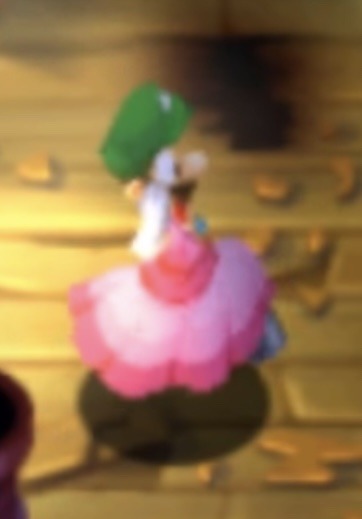
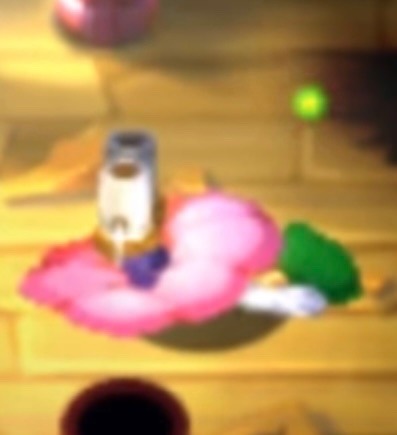
important to me that in the superstar saga remake luigi tied paint buckets to his feet so he looked as tall as the princess
#liste n#i love the original gba version i do. but there are so many little details in the remake that make me smile i just prefer it idk#luigi#smb
1K notes
·
View notes
Photo

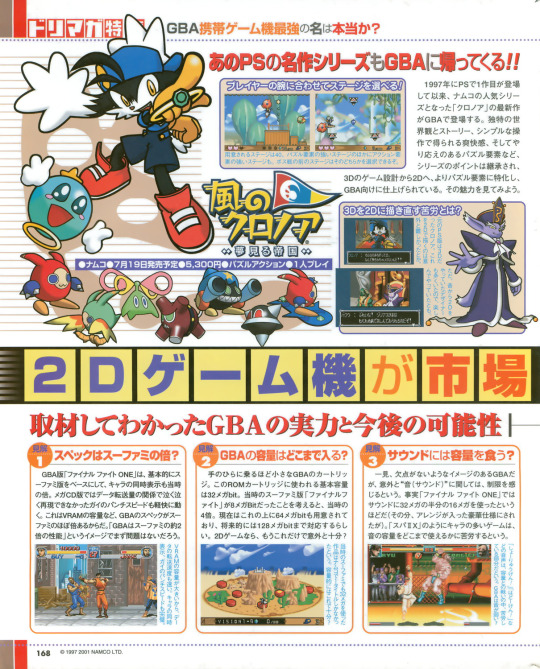

From: Dorimaga (Dreamcast Magazine) June 8th, 2001 issue
Preview of Klonoa: Empire of Dreams and an interview with Namco’s Toshinari Hara about Klonoa’s leap to the Game Boy Advance.
Interview translation:
Until recently, Mr. Hara was a member of the Quality Control Department and has seen all of Namco's titles. Currently, he is producing the GBA version of "Klonoa" at the 1st Development Division.
Recently, "Klonoa" was also released on PS2. Why did you decide to release the latest title on GBA?
Hara: It's simply because I love Klonoa (laughs). When I used to work in quality control, I played all of Namco's games down to the last detail, and I enjoyed Klonoa as a regular player. So when I heard about the idea of releasing something for the GBA, Klonoa was the first thing I thought of. The original game was a 3D action game, but I decided that the essence of the game would be enjoyable enough in 2D.
I see. By the way, what are the features of the GBA version of "Klonoa"?
Hara: The original Klonoa was based on the concept of "moving around freely like the wind in a 3D space". So I tried to focus on the puzzle aspect, which is the other aspect of the Klonoa series.
How was it for you to change the concept somewhat?
Hara: The original Klonoa team might be upset with me, but I really liked the puzzle aspect of Klonoa, so this was the direction I wanted to take. And the team understood that, so I made the game in that direction. However, if the game was full of puzzles, you would not be able to move on if you got stuck, and the fun would be cut short, so we also prepared an action-oriented aspect of the game too. Personally, I would have liked to make every aspect of the game a solid puzzle (laughs).
(laughs) Now that 3D is in full swing, how do you feel about creating software on 2D hardware?
Hara: The GBA uses C (programming language) instead of Assembly, and the programmers are used to it, so it didn't seem to be too difficult. Namco's designers have been doing 2D work for a long time. Some of them can draw pixels properly, so many of them enjoyed working on it. This is especially true for people who are a little older (laughs). The way it's made is the same, and 2D games can be made by focusing only on the gameplay without worrying about 3D effects.
What do you think are the pros and cons of the GBA?
Hara: It's not as powerful as the latest consoles, but it's better than the Super Nintendo. If you want to compete on the basis of interesting gameplay, I think this level of performance is sufficient. So, I haven't had much trouble making what I wanted to do into a game. Well, it's been a while since I've had to calculate the capacity.
How do you see the future potential of the GBA hardware? Are there any games you would like to work on in the future?
Hara: From a creator's point of view, I think that the fact that not all game consoles are 3D, and that there are still 2D consoles in the market, makes it very easy to create games. In particular, there are differences between home consoles and handheld consoles, and there are various types of games, and I think there are different types of hardware that are suitable and unsuitable for different types of games. In that sense, I'm glad that there are various types of hardware with different characteristics.
Lastly, do you have a message for us?
Hara: If you like the puzzle elements of Klonoa as much as I do, you will be satisfied with the contents of this game. The graphics are beautiful, and it's an action game where you can enjoy both puzzles and action.
26 notes
·
View notes
Text
30 Years of Super Nintendo - Flashback Special
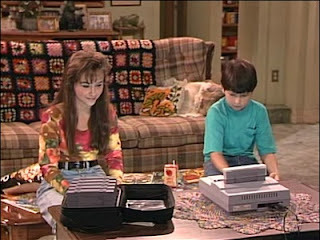
The Super Nintendo Entertainment System (SNES) recently celebrated its 30th anniversary of the North American launch, so it seems the perfect time to post a Flashback Special honoring it! Suppose you have not perused a past Flashback Special of mine (all linked at the bottom of this entry). In that case, they are essentially my history with the platform over the years, with a little bit of history thrown in, and recounting all my favorite games, accessories, memories, and moments with the system.
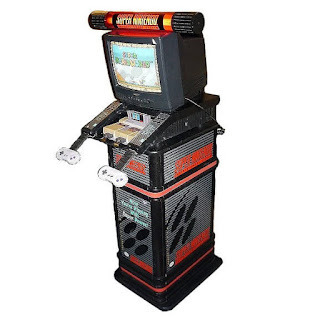
Odds are for the average gaming enthusiast reading this, and you probably are familiar with the core details of the SNES launch stateside (if not, then I highly recommend CGQ’s video on it for a quick breakdown). The SNES launched in 1991 when I was eight. I did not have a subscription to any gaming magazines yet, so I most likely first found out about the system around that time from classmates at the time at school, the infamous Paul Rudd commercial, and the fourth season of Roseanne that transpired from 1991-92.
I vividly remember the Roseanne episode with her son, DJ, pleading with his parents for the brand new SNES for his birthday gift and how his parents dreaded not being able to afford the system. I covered that episode when I did my Roseanne complete series re-watch here in the year leading up to the relaunch of the show several years ago. It brought back memories of how that was the story with my parents also denying me the much sought-after SNES, saying it cost too much and that I already have an NES to tide me over. ”But mommmmm, the SNES is 16-bits!!!!” Yeah….playing that angle got me nowhere.
Kiosks & Friends
The first couple of years for the SNES, I mostly remember playing at store kiosks. Super Mario World blew me away from the brief time I played it with it being such a leap from the NES installments. I always ate up the precious few minutes I could procure at a store kiosk if no one were playing Super Mario Kart. One last store kiosk memory was eye-gazing over the impressive WWF Royal Rumble. I loved WWF WrestleFest in the arcade, and for a couple of years, it was the only WWF game that offered up WWF’s marquee over-the-top rope elimination match, the Royal Rumble, and it was endlessly fun to play in the arcade. Fast-forward to playing it on console kiosks around its 1993 release, and I could not eat up enough of that game’s Royal Rumble mode either, and at the time, the graphics seemed like a huge step up from the wrestling games on NES. One of my favorite issues of Nintendo Power is the 50th issue that did a several-page spread on WWF Royal Rumble that I must have thoroughly re-read at least a dozen times.

I read this NP spread of WWF Royal Rumble many times, and it was one of my initially most desired SNES games!
Around 1993/94, a couple of friends and classmates started to get the Super Nintendo. An early SNES memory that stuck with me all these years is my grade school friend, Jon-Paul, having me over for his birthday where he rented a SNES console and Street Fighter II: Turbo from the video store, and we played it for several hours straight. Another is spending a lot of 1994 at my neighborhood friend’s place, where we played countless sessions of NBA Jam and Mortal Kombat II. Both games were big on codes and secrets and perfect two-player games. I was just regularly getting into video game magazines at this time and ate up issues of Tips & Tricks, Game Players, and Electronic Gaming Monthly to see what kind of hidden character and other much-rumored codes were making the waves each month for both of these games. Mortal Kombat II especially dominated the code-fervor that season with trying to uncover how to face off against secret characters like Jade, Noob Saibot, and Smoke, and trying to memorize all the input sequences for the game’s infamous Fatalities.
Fast forward to late 1995/early 1996, and I still did not have a SNES, but a new neighborhood friend, Rich, just got one and the next several months at his place introduced me to so many SNES games. Rich kind of got me somewhat into RPGs at the time, and while it may not sound fun on paper, there were many times I recall just kind of embracing the role of “armchair gamer.” I did this for games like EVO: Search for Eden, and Eye of the Beholder while keeping an eye out during gameplay to offer whatever suggestions seemed viable.
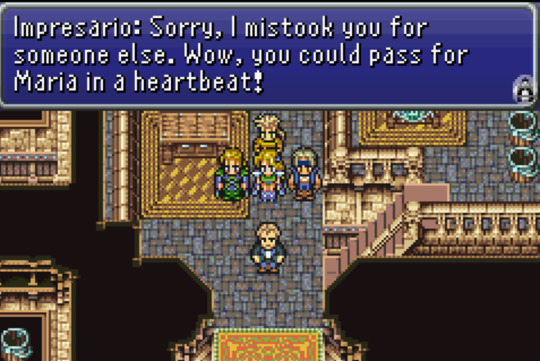
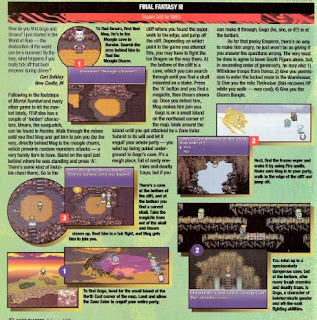
FFVI was eye-opening to me at the time of what video game narratives were capable of, and I devoured the latest secrets for FFVI discovered in the latest issue of my Game Players subscription that was delivered.
The RPG I felt like that I contributed something to was the game that was originally released as Final Fantasy III. That game featured two-player support for battles only, so it was refreshing to help Rich with progressing through the game finally. My two favorite characters to use were Sabin and Cyan. That game especially blew me away with its larger-than-life story with two different game worlds, the momentous opera scene with Celes, the dazzling mode-seven graphics when traveling via airship or Chocobo, constantly getting irked at Shadow whenever he deserted the party, and so many other priceless moments. Over the years, I tried restarting the GBA version on a couple of occasions and regrettably have yet to finish it.
Finally Owning a SNES….in 1996
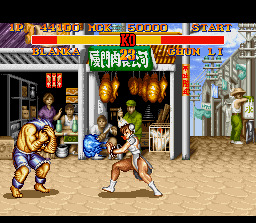
Growing up with divorced parents put me in a unique childhood when it came to gaming. I lived with my mom, who provided for us as best as possible for the three siblings I grew up with, so we only had an NES for us for the longest time. However, when visiting my dad on weekends, he would always be big on hitting up as many garage sales and second-hand stores as possible and would acquire whatever he thought seemed like a bargain. Games-wise, this usually meant he lagged behind a generation because everyone was offloading their Atari VCS/2600s at garage sales for cheap when the NES was king, so I could have a great couple of years to become familiar with the pioneering-era of games on Atari. He then got into the NES scene when the SNES hit in 1991.
Sure enough, the same month the N64 launched in America in September 1996 was when he bought a Super Nintendo for the family used at our local Premiere Video. The game we picked up with it was Street Fighter II: Turbo. My dad instantly remarked upon booting it up the noticeable jump in graphics. We played nothing but Capcom’s second Street Fighter game on SNES for a few weekends. I could only finish that game by button mashing into a victory against the final boss, M. Bison, once….with M. Bison. I still have a lot of love for this era of Street Fighter - whether it be for the roster, every character’s stage and theme music, and receiving Nintendo Power’s strategy guide for the game for Christmas and studying it regularly to improve.

After a few weeks, we realized we needed something else than a fighting game, and after another trip to Premiere Video, we came home with Super Mario All-Stars. It felt like the easy choice to go with 16-bit remakes of all four 8-bit versions of the core Mario Bros. games. Every game felt like a whole different game with all-new graphics and sound, and more importantly, being able to save progress midgame. This was a bigger hit with the entire family, and it provided many days of taking turns in its alternating two-player mode to see who could get the farthest in the four Mario games included.
youtube
Make sure to have some tissues by your side as you witness FFIII/VI's infamous "opera" scene. Seriously, this was mind-blowing stuff to 13-year old Dale in 1996.
16-bit Sportsball Fun

After playing a lot of those first two SNES games, I went into this stretch for the next several years, where most of what I played was sports and wrestling games. I attribute this to many multiplayer sessions with Rich, my brother, Joe, and my dad. I know my dad was not all that into sports other than a passing interest in rooting on hometown Minnesota pro-sports teams. Still, I have to give him credit for spending as much time with us and taking the time to learn and become a pretty solid player at teaming up with me in many sports games.
It is worth noting that I feel the 16-bit era is probably the last-gen where most of its library of sports games had a relatively simple pick-up-and-play feel that NES games had. That changed a little bit in the final SNES years, where it was usually EA’s games that started to incorporate more realism in their sports games and make use of most of the buttons of the SNES controller.
For football, Madden NFL ‘97 was the one I played the most. I played plenty of the Genesis version at Rich's place, so much so that I noticed too many little differences with the SNES version to make it stand out on its own. For 16-bit sports nuts that want to know, the Genesis version had the better playing version, but the SNES had a better overall presentation and more popping audio and visuals. I was part of a small slice of sports gamers big into NES Play Action Football, and the 16-bit version played almost exactly like the NES version, but with a 16-bit upgrade and also has a nifty feature to play games at the high school, college, or NFL level.
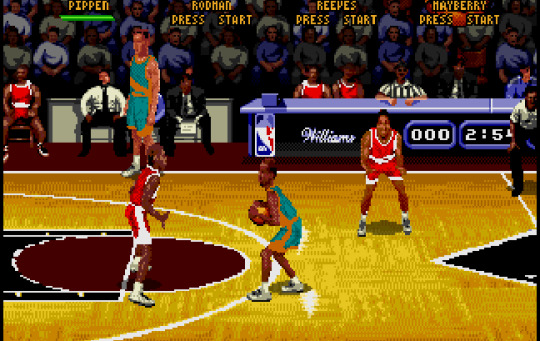

NBA Jam and NBA Hangtime dominated my 16-bit sports lineup. The code scene for these games were so intense at the time I had to keep my own binder of notes on them all that I still have today as seen above!
As I alluded to earlier, when it came to hoops, I played way too much NBA Jam the first year it was out at my friend’s place. However, the arcade hoops game I played the most on SNES was NBA Hangtime, which was developed by the same people who made Jam. I got that game new for Christmas in 1996 and must have played it regularly with Rich for nearly a year straight. I do not hear that game receive the same level of praise as Jam, but it added a few new fun layers to freshen up the gameplay, like being able to do co-op dunks and earn “Team Fire,” and being able to create players. For more simulation-focused hoops, I played a lot of NBA Live ’96 with my dad, in addition to Nintendo’s NCAA Basketball which appeared like a technical marvel to me that was ahead of its time with the mode-seven camera allowing constant 3D rotation whenever possession of the ball changed and foreshadowed what would become the go-to camera perspective for the next-gen of basketball games. Finally, I will cherish my time with Bill Laimbeer’s Combat Basketball for it being the only hoops game I ever had to consult a guide to figure out how to shoot the damn ball….and for its surprisingly rocking soundtrack. Find out all about it when I broke that game down with the Your Parents Basement crew on their penultimate podcast.

Nintendo incorporated the same camera style into its hockey game, NHL Stanley Cup. Its graphics also impressed me, but it was rather challenging to score a goal, and I did not have as much fun with it. I played EA’s hockey games more on Genesis than SNES, but EA’s baseball game, MLBPA Baseball, was the hardball game I spent the most time with on Super Nintendo. Many years later, I picked up Nintendo’s Ken Griffey Jr. Presents: Major League Baseball, and had some fun with it, but already played the Game Boy version of it to death by the time I picked up the SNES version, and thus did not invest as much time with it as I did with EA’s game.
Wanna Wrassle!?
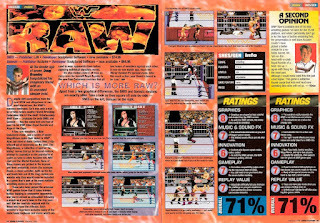
I must have read through this review of WWF RAW countless times in my youth, and seeing how this essentially is a bigger and better version of Royal Rumble only increased my desire to one day own a SNES!
The North American wrestling library was a significant step up from the bottom of the stairwell where most of the NES games hung out….but on the SNES, it only made it roughly halfway up the stairs. The aforementioned WWF Royal Rumble provided many hours of fun for its day, but it has not stood the test of time with the button-mashing grapple meter it featured that will obliterate thumbs on the normal difficulty level! Its sequel, WWF RAW, was noteworthy for having more match types available and being one of the first games to have a selectable female wrestler in Luna Vachon, but it too used that same ill-fated grapple meter that has not aged well. WWF Wrestlemania: The Arcade Game is a fun little hybrid of Mortal Kombat and wrestling, but the SNES version is notorious for lacking two wrestlers compared to all other home versions.
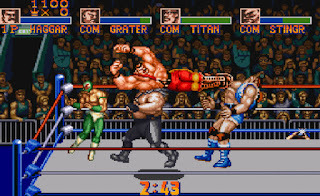
For non-WWF games, WCW SuperBrawl Wrestling is rather unremarkable….except for its exceptional wrestler select screen.There were a few interesting unlicensed wrestling games in America. Natsume Championship Wrestling featured a solid wrestling engine but removed/altered the AJPW wrestlers from the Japanese version of the game. Hammerlock had a promising concept of having part of the screen dedicated to nonstop Tecmo-esque cinematics. In contrast, the other half of the screen featured 2D gameplay, but the cameras constantly flipped on screen, to which half was dedicated to cinematics or gameplay. It resulted in it being a jarring mess. Saturday Night Slam Masters is no such mess, however, and is a better hybrid of fighting game meets wrestling game, with this one done by Capcom. It features larger-than-life character sprites, full-on ring entrances with laser lights, and is a fun-playing combination of wrestling and Street Fighter. To top it off, Slam Masters has Final Fight’s Mike Haggar on the roster to boot!
youtube
Joey Pink does a fine job detailing why Capcom's "Street Fighter" in a wrestling ring should not be missed!
Ensuring RPGs are here to Stay
Aside from watching Rich play some of the RPGs I listed above, and of course, playing Final Fantasy VI with him, I did get a chance to play a few other RPGs on the SNES over the years, and it was not until the last few years that I finally finished a couple of them. In the late 1990s I first started two RPGs that stood out to me at the time because they broke out of the medieval fantasy mold most other RPGs at the time took place in. Shadowrun on the SNES was drastically different from the Genesis version I first encountered at Rich’s. This one still had the same futuristic cyberpunk world setting and terminology, but there were many more dialog options with NPCs that were pivotal in asking the right questions to progress the story. Additionally, the hacking games played out differently and had more of a puzzle theme to them than the action-oriented ones in the Genesis version, and the combat had kind a PC interface where a cursor had to be dragged across the screen on which target to aim at. I still wound up being totally into it and became stuck in the back half of the game before my save data became corrupted. I thought that would end my days with Shadowrun…

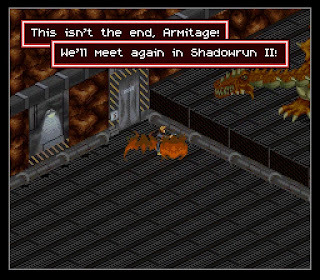
SNES Shadowrun remains one of my all-time favorite RPGs as of this writing! The final gauntlet tower was an ordeal and a half to work through, only to face off against a dragon as the final boss!
…until nearly two decades later in 2016. I mentioned on past flashback specials how I occasionally guest host on the Your Parents Basement podcast, where they cover a random retro game per episode. In 2016 they asked me if there were any games I had in mind to cover, and Shadowrun felt like worth revisiting and possibly knocking off the “must beat this game” bucket list. I progressed until about a little over halfway through by the time we all met to record and broke down the game, but by that point, I just started to make further progress than my last effort and was determined to see this one through! I was playing on actual SNES hardware and was surprised that the battery still held a save but ran into trouble in the final tower with a gauntlet of enemies on each floor to overcome before the final boss. I looked up a walkthrough and discovered an exploit to grind experience to beef up my character. Eventually, I managed to persevere and finally conquer the final boss, a fire-breathing dragon, to cross finishing Shadowrun off my bucket list! I had a riot podcasting with the YPB crew about it too, so please click or press here to give it a listen if you want to know more about this under-the-radar 16-bit RPG.
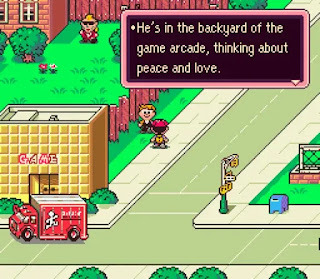
Fast forward three years later in 2019, and the awesome YPB hosts of Steve, Huell, and Todd helped me once again restart and finish another SNES RPG that I came close to finishing in the late 1990s before evil corrupt save data reared its ugly head again. This time the game of choice is the uber-expensive Earthbound. Like Shadowrun, that game stood out to me because its setting went against the grain of fantasy settings and instead took place in modern times as grade school kids. The opening levels felt like getting lost in your neighborhood and using childlike items as weapons like Yo-Yos and baseball bats. I do not own that ridiculously expensive game, but by 2019 I did own a SNES Mini (more on that in a bit) that I made sure to abuse the save state and the rewind functions it provided to overcome some troubling bosses in the back half of the game. That final act of the game certainly goes places with its sci-fi twists and feels like an entirely different game, but I still loved it all the same! It felt exhilarating to finally knock this one off my “to do” list as well, and I had just as much fun dissecting it to pieces with the YPB crew that you can check out by click or pressing here.
Unfortunately, this is where my extensive hands-on time with SNES RPGs comes to an end. I played a lot of FFIII/VI, and finished Earthbound, and Shadowrun. Sure, I dabbled in several other games but did not put more than an hour or two into them. One of those games is the much-heralded, Legend of Zelda: A Link to the Past, and I have no excuse for never sticking with it because I loved the NES original. It was the GBA re-release I played, and I think I was spreading myself thin while playing and reviewing too many games simultaneously. Lufia and Breath of Fire II were another pair of RPGs I put a couple of hours into that both left me with promising first impressions, but there was a whole other reason why I did not go back to those again, and that is because then I was waist-deep at the time in…..
Discovering Emulation
Right around the time my family acquired its first computer in the fall of 1997 was when I found out about emulation. It seemed way too good to be true to easily download and play games right on the computer, especially when factoring in the SNES was at the tail end of its lifecycle, and there were still new games releasing for it. As an unemployed 9th grader at the time, I sampled countless 8- and 16-bit ROMs with the SNES games I was the most curious about. A few of the RPGs in the previous paragraph being prime examples of the ones I invested the most time into. It proved to be overwhelming with so many choices, but I took a long sabbatical after a year or so of taking in the emulation scene after the family computer crashed and I lost all the save data I had amassed in so many games.
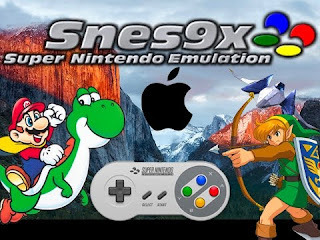
It has been interesting to see how emulation has evolved over the years from programs like SNES9X and Retroarch to being incorporated into machines like the MISTer, RetroPi, and Retron 5. Nintendo has learned to embrace official, legal emulation over the years with purchasable digital classic games on systems such as the Wii, WiiU, and 3DS. Having a stable income as an adult now many years later, I feel guilty for embracing the emulation scene so hard in my teenage years, so much so that whenever Nintendo re-releases one of its classic hits several times over, I choose to purchase it again (well…usually at a sale price) to redeem myself.
Keeping SNES Alive Today
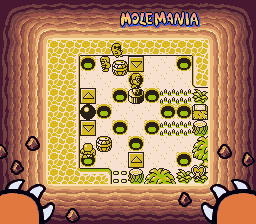
Over the years, I find myself diving into retro games versus the latest and greatest coming out. I am a fan of the various SNES hardware updates/clones, both officially from Nintendo and unofficially from other companies, which has kept my SNES and other retro game fandom blood flowing over the decades. I am unsure if it feels right to lump it in here, but the Super Game Boy lead to me getting a lot of extra life out of my SNES. Playing Game Boy games on the big screen was a big deal to me back then, considering it was always a pain to make out what was happening on the non-backlit handheld. For some reason, those special border screens that would eventually have funny animations after being left idle for so long made an impression on me. Game Boy games with the “Super Game Boy Enhanced” logo on the front of the box usually have their own exclusive border and special color palette. I loved the Mole Mania and Donkey Kong Land borders the most! I thought it was rad that around 15-20 special enhanced Super Game Boy titles featured multiplayer support with two SNES controllers. They consisted almost entirely of Bomberman and fighting games, but it was still a cool feature nonetheless.
The handheld Hyperkin SupaBoy is the unauthorized SNES take on the Sega Nomad by having a portable SNES. It is a bit on the bulky side, but it has a rechargeable battery, and its support has been flawless with my entire SNES library. Another Hyperkin product I got a lot of use out of is the Retron 5. I know that particular clone system is controversial with retro game enthusiasts based on the unauthorized emulators it implements. However, the user interface and emulation support made it possible for me to make record progress in many SNES games by taking advantage of save states and its optional Game Genie-esque cheats library. The SNES Classic Edition is an excellent official piece of hardware from Nintendo that has the pint-sized SNES pre-installed with 21 SNES games, one of which is previously unreleased Star Fox 2. It has an adorably intuitive interface and supports game rewinding and save states, which made it the way I was finally able to finish Earthbound. It was also surprisingly not-so-difficult to plug into a PC and import a bunch of SNES ROMs into. Other companies like 8bitdo made that system extra convenient by making their recommended wireless controllers compatible with it!
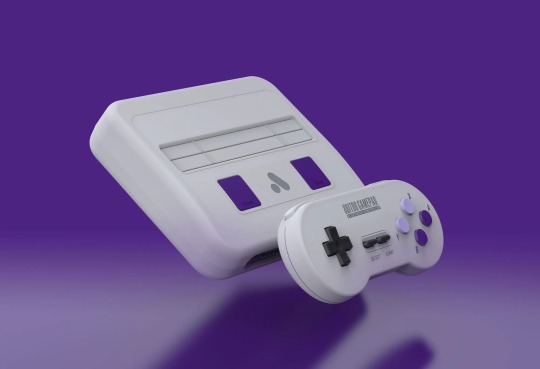
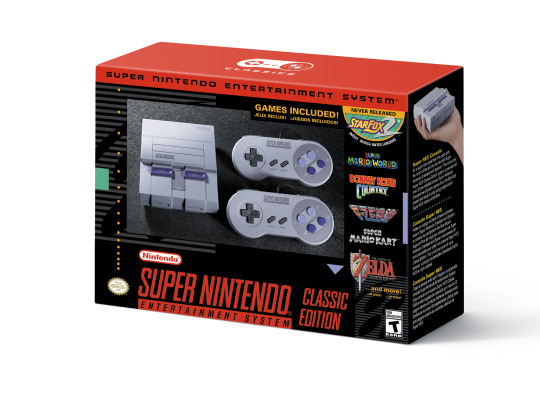
If you did not grow up with the SNES, then both of these options are great entry points for those looking to move on beyond emulators.
The Analogue Super NT may have been pushing it too much price-wise. When it comes down to the nuts and bolts of emulation tech, I am not a wizard by any means, except that by all sources, it sounds like the Super NT offers the best hardware emulation with its FPGA technology. It makes SNES games appear as pristine as possible on an HD/4KTV without any or as minimal of the fuzziness that happens whenever I try plugging in the composite/RCA cables from a base SNES system into a 4K/HDTV. For those unfamiliar with the Super NT, this video from the My Life in Gaming crew does a thorough dissection of everything it has to offer. The list of options in there is intimidating to mess around with, but this sounds like the way to go if one wants to keep playing their cartridges……although I have to admit I am pretty satisfied currently with the Retron 5 and SNES Classic Edition.

Odds are some of you are quite a bit younger than me and grew up post-SNES lifecycle. Not interested in going down the pricey road of hunting down old cartridges and hardware, and do not want to dabble on the dark side of illegal emulation? Then a terrific alternative is if you have a Switch with Nintendo’s $20/year online service membership and taking advantage of the Nintendo Switch Online and Super Nintendo Switch Online digital game portals. It has unlimited access to the slate of games on there, along with save points as long as your membership remains active. The implementation of save states and the user interface has also improved noticeably over the emulation used for NES & SNES Classic Editions. More importantly, it adds the feature to play online with a friend.
Last year I played online SNES games with my nephew, who was wrapping up 6th grade at the time, and this was his first time playing SNES games. He loves Mario Kart 8 on Switch, and so when the first game we played was the original Super Mario Kart, I could not help but crack up when he instantly remarked, “Dale, this looks old!” He eventually came around, and then we had some fun playing co-op , Joe & Mac . A couple of years ago, on my Genesis Flashback Special, I made sure to reminisce of my fond memories of the summer I spent playing nonstop Sega Channel. These NES/SNES Switch portals are essentially the Sega Channel, but far better because it does not cost $15 a month (in 1994 dollars which equals $27.63 today per Google), offers multiple save states, and ability to play online for only $20 a year!!! Kids, get your parents to hook you up now!!!
Miscellaneous Quick Hits
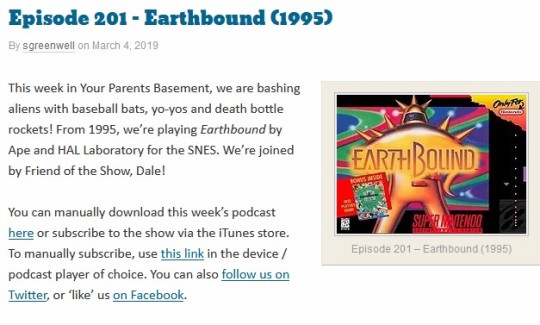
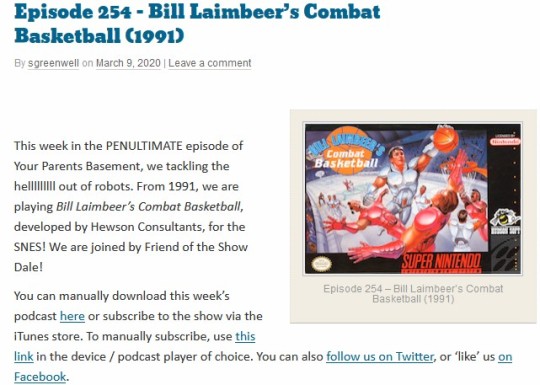
SNES games were the most common denominator on six of the 13 episodes I guest hosted on the retro game podcast, Your Parents Basement. Check out their full archives by click or pressing here.
-Turns out I did quite a few guest hosting spots on Your Parents Basement Podcast for SNES games. For those that are podcasting fiends and dug the three episodes I linked to already, then I will link you to three more SNES themed episodes I appeared on where I breathed in the Mode 7 skies of Pilotwings, embraced Capcom’s action-platformer prowess in X-Men: Mutant Apocalypse, and made sure not to miss any Gatorade and Wheaties health pick-ups in Michael Jordan: Chaos in the Windy City.

-The SNES controller is my favorite pre-disc console era controller. It kept the similar button layout of the NES controller but rounded off the edges into its iconic “dog bone” feel so the controller no longer cramped in your hands! Throw in the two extra face buttons and two additional shoulder buttons, and it opened up all kinds of deeper gameplay possibilities! It made it perfect for most fighting games that used almost all the face and shoulder buttons. I found the shoulder buttons were also smartly implemented in NBA Jam/Hangtime for being assigned to use for turbo speed functionality.
As far as other SNES controllers/peripherals go, since I loved the NES Zapper, I always wanted to try the Super Scope, but as a kiddo, its bazooka-sized proportions were kind of intimidating. It still kind of bums me out all these years I never got to experience it with epics like Yoshi’s Safari, T2: The Arcade Game, and Tin Star. I never had an opportunity to use the SNES mouse either, which I kind of regret all these years later after seeing all the marvelous creations from experts at Mario Paint, and it was cool to see some PC ports like Civilization, Doom, and Wolfenstein 3D take advantage of SNES Mouse compatibility.

-The 16-bit era was when fighting games exploded, and as you can tell above, I spent a lot of time with Street Fighter II: Turbo, and the first two Mortal Kombat games. Other than that, though, the only other fighting game on SNES I put significant time into was TMNT Tournament Fighters. It was released at the tail end of the TMNT-mania when the cartoon peaked at its popularity. The game itself was a surprisingly competent licensed fighting game from Konami, and tried its best to feel like a solid Street Fighter-clone. Speaking of them pesky turtles…
-…TMNT IV: Turtles in Time was the only beat-em-up brawler I put considerable time into on the SNES. I have vague memories of trying others out once or twice like The Peace Keepers, and Super Double Dragon, but Turtles in Time was the one I frequently revisited over the years. It is a superb rendition of the arcade game, with SNES-exclusive levels like the Technodrome that had a fantastic first-person boss fight against Shredder, where lowly Foot Soldiers had to be chucked right at him to defeat Shredder. The soundtrack is one of my favorite SNES scores, so much so that I went all-in to get the for it! I have so many great memories of this game, with the highlight being my friend Matt and I revisiting this for complete runs of it once every year or two for about a dozen years.
youtube
Turtles in Time and FFIII/VI are my favorite SNES soundtracks, but Turtles in Time I own on vinyl so I will embed it here in all its glory for you to enjoy as well!
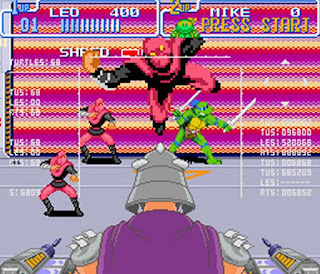
-The SNES library had a quality slate of racing games. Super Mario Kart quickly rose to the top of the ranks and was always fun to bust through a GP with a friend. Street Racer was one of the first kart-clones to hit in 1994, and for some reason, that one always stuck with me. As did it being one of the few games to have four-player split-screen support with all four screens being horizontal! Rock ‘n Roll Racing is another killer arcade racer on SNES; think of a more beefed up RC Pro-AM, but with a good dose of heavy metal mixed in. This past year saw it re-released as part of the Blizzard Arcade Collection for everyone to experience it! I remember trying out F-Zero at a store kiosk around SNES launch, but was too young at eight years old at the time to fully grasp its style of futuristic racing (or that the name was a riff on F1 racing until a couple of years ago). I was more into a game similar to its style that was the trilogy of Top Gear titles.
Uniracers was a quirky racer I enjoyed with its unique aesthetic and one-wheeled racers taking advantage of their nature in races filled with jumps and loop-de-loops….too bad about Pixar holding a grudge against Nintendo and legally forcing them to yank it off shelves. Nintendo’s other racer, Stunt Race FX, was ahead of its time with the polygonal FX-based graphics running pretty chunky on the SNES. Still, it is a commendable piece of 16-bit tech they were just barely able to keep running at a passable-enough framerate. Another FX-chip game that did not originally gel with me was…
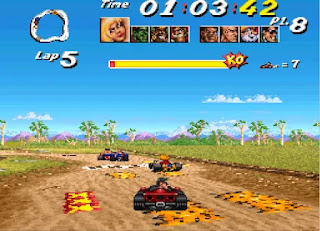
-…the original Star Fox. Being 10 when it released in 1993, I thought those polygonal graphics looked blocky and horrendous and would have none of it! Many years later, I would revisit it and rightfully come around on it!
-Another Nintendo-published game that received a lot of hype was Donkey Kong Country with its cutting-edge 3D models. They were plastered all over gaming mags at the time. I briefly recall trying out the first and second of the three Donkey Kong Country games on SNES. However, I did not put more time into them because I beat Donkey Kong Land on Game Boy before our family got a SNES, which was just a watered-down port with some remixed levels for the handheld. I enjoyed my time with it, but its disappointingly blunt “congratulations” ending left a bad impression on me, and I never felt like giving the other entries a serious go all these years.

-Some may be wondering why there has yet not been anything dedicated to the pair of Super Mario World titles and Super Mario RPG? Super Mario World was probably one of the first SNES games I tried when I visited my older brother at his first apartment in the early 90s. I think the heavy-duty graphics and trying to comprehend attacking with Yoshi proved to be too much for eight or nine-year-old me at the time. I played it a few other times in my 20s, hanging out with coworkers on retro game nights, and had fun with it, but I think since I was exposed to the NES trilogy more and played the hell out of All-Stars, that those were the versions I preferred more.
I appreciated how Nintendo stepped up to Sega’s edgier marketing at the time with Nintendo’s “Play it Loud” marketing campaign. Unfortunately, I think their ad for Super Mario World 2: Yoshi’s Island was a bit too extreme for 12-year old Dale at the time. That ad (click here for it if you are feeling daring)was forever planted in my subconscious and always crossed my mind and indirectly caused me to avoid Yoshi’s Island for all these years. I did pick up Super Mario RPG and it is on my “bucket list” of games to play as well. I am holding off on it all these years because I was hanging out with Matt one day, and he explained how he was having a tough time with the final boss, Smithy. Well, he wanted to give me a quick demo to show how unforgiving of a challenge the boss was….but for some reason his clutch gaming skills kicked in right then, and he beat Smithy and was exposed to the ending right then and there!
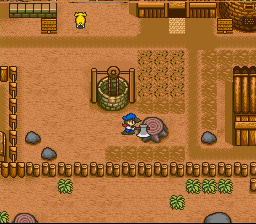
-As far as other tough SNES games go, the two most challenging for me are easily Contra III: The Alien Wars and Zombie Ate My Neighbors. Contra III is like the first two games on steroids. I love the boss battles and intense walk-n-shoot chaos, but do not love constantly dying in one shot! Zombies Ate My Neighbors is another fun action-platformer that is also equally tough to make it farther than a few levels in unless you seriously dedicate yourself to it. Hey, both of these games also saw re-releases this past year on current consoles with the Contra Anniversary Collection and Zombies Ate My Neighbors & Ghoul Patrol set for those wanting to experience 16-bit nail-biting difficulty (but with save state support!).
youtube
I hope this excellent video review from the quintessential retro video game source, Jeremy Parish, suffices for my lack of any meaningful Super Mario World memories here.
-In 1997, I was hyped for a late SNES release, the original Harvest Moon. The farm/life/dating-sim series is still around today from publisher Natsume (as well as the original developers parting ways with Natsume and delivering their own competing Story of Seasons series). During the SNES era, I spent several summers out on a farm. I appreciated rural life's solitude and free spirit lifestyle, and that first Harvest Moon game perfectly encapsulated that. Trying to determine the best way to spend the day tending to the fields, livestock and managing a social/family life was surprisingly fun and engaging! Harvest Moon remain one of two games that I submitted a blurry Polaroid photo to Nintendo Power’s “Arena” high score section. I cannot recall if my score got posted or not.

-The original Sim City port on SNES received a lot of love around the SNES launch window, with Nintendo giving it a unique makeover with bonus Nintendo characters in it and an exclusive tutor in the form of Dr. Wright to ease everyone into the simulation gameplay. I never played too much of that version, but one night at Rich’s, the game we decided to rent that night was Sim City 2000. That one was released way late into the SNES lifecycle and lacked any Nintendo extras the first SNES game had. Still, we stayed up all night playing it and looking at our daily news recap and mayor approval ratings and trying to figure out where to stop underwater pipe blockages! It ran slowwww on the SNES, but we tolerated it fine enough at the time because I had yet to play the PC version. Eventually, I would check out the PC version and came away surprised with so much I had to put up within the SNES game.
-For those wanting to dare the Super Famicom scene, there are a plethora of great games that never made their way stateside, and better yet, a hearty chunk of them have received English fan translations. I am partial to the FirePro wrestling games that never made it here that are vastly superior to all the American wrestling games I broke down above, BS Out of Bounds Golf is an addicting take on miniature golf, the original Star Ocean, and the Back to the Future platformer that was not a five-star classic by any means, but blew away the poor NES and Genesis games that did release here. If you are not that familiar with the Super Famicom library, this top 50 list from RVG Fanatic is a great place to start your research and very much helped clueing me into a bunch of Super Famicom games I had little-to-no knowledge of.
Conclusion
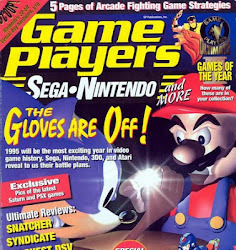
If you are around my age reading this, you may be wondering why I have not gone on about the fabled “16-bit Wars” by now. Rest assured, I experienced it in the lunchroom and at recess and in gaming magazines at the time. I devoured all the side-by-side screenshots in gaming mags of dual-platform releases to see if I could spot which version was better. I want to say back then, I sided with the SNES because I grew up with the NES, but that does not seem like a fair choice since I did not own a SNES until 1996. Reflecting on it, although I experienced a fair amount of RPGs and other games on SNES with Rich, I primarily played endless hours of Genesis games with him back at the time. So whenever I hung out with Rich, I considered myself a Genesis fan, and when I finally got a SNES and grew my SNES library, I considered myself a SNES fan and avoided a lot of the “console wars” trash talk. For younger readers here who want to learn more about the fervor of the 16-bit wars, the book, Console Wars, and its corresponding documentary (which is currently only available on Paramount+/CBS All Access sadly) are my recommended ways to absorb all that hoopla.
I will cherish all of the past 30 years of SNES memories and hope you have enjoyed reminiscing with me for the last several thousand words. If you want to hear more of my SNES memories in podcast form, I have a few SNES-centric episodes of my old podcast I recently un-vaulted and have embedded below for your pleasure. They have some of the friends I repeatedly mentioned above as co-hosts that share their SNES experiences and memories, so please load up a random SNES “podcast game” and boot one of these podcasts up for fitting background noise….

youtube
10 years ago I did a 20th anniversary SNES special with Matt!
youtube
Here is the history of RPG series episode dedicated to the 16-bit era.
youtube
Finally, here is Matt and I hosting the 16-bit installment of our history of comic book games series.
Bonus Overtime
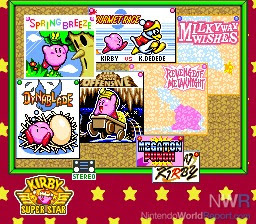
It would not be a Flashback Special without one random oddball bonus story to wrap it up with. The only Kirby game I ever finished receives that honor. One day, my brother and his friend Jake were over at my place. We were discussing SNES games at some point, and Jake mentioned how Kirby Super Star is his all-time favorite. I said how I never played it and did not think anything of it at the time, but the next time I met up with him and my brother, Jake had the copy of that game with him and insisted on borrowing it to me and said not to give it back until I finished it. I felt this sudden obligation to play through it as a priority, so I did not feel like I was keeping his game hostage.
Luckily, Kirby Super Star is a damn fun game, which the front of the box labels as “8 Games in One!” Most of the games are abbreviated-length adventures of only a handful of missions in their unique theme of levels, and a few of the games are mini-games like a race against King DeDeDe. Regardless, almost every game provided that trademark Kirby lighthearted fun and was hard to put down! Kirby’s Dream Course is also a lot of fun on SNES, and is an interesting take of Kirby meets miniature golf! With that anecdote, I will wrap up yet another Flashback Special. Thank you for sticking with me this far, and If you dug reading about my trials and tribulations with Nintendo’s 16-bit machine, please take a look at the other Flashbacks I have linked below!
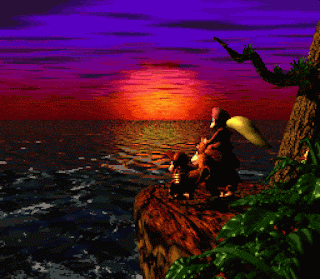
My Other Gaming Flashbacks
Dreamcast 20th Anniversary
GameBoy 30th Anniversary
Genesis 30th Anniversary
NES 35th Anniversary
PSone 25th Anniversary
PS2 20th Anniversary
PSP 15th Anniversary and Neo-Geo 30th Anniversary
Saturn and Virtual Boy 25th Anniversaries
TurboGrafX-16 30th and 32-X 25th Anniversaries
Xbox 360 15th Anniversary
#videogames#super nintendo#nintendo#SNES#Super Mario Kart#super mario world#final fantasy vi#final fantasy iii#shadowrun#nba jam#nba hangtime#Mortal Kombat#mortal kombat ii#turtles in time#teenage mutant ninja turtles#sim city#sim city 2000#wwf royal rumble#saturday night slam masters#donkey kong country#kirby super star#ncaa basketball
10 notes
·
View notes
Text
Mother 3 - An In-depth Critique and Review
Ah, Mother 3, how I love you so!
The game which with which I forwent all possible aspirations to healthily integate into normal High School society: imagine walking into a party, people are drinking and being cool, and you ask them if they have ever played a very underground, very deep RPG only released in Japan called "Mother".
Yeah! I know! It's like you're asking to be bullied, and I realized it too late.
But anyway!
Mother 3 is one of the most important games you could ever play --alas, if only it wasn't near impossible to obtain it.
Yet, perhaps this adds to its allure and to the power of its narrative --a narrative which, by the way, I'm convinced is the very actual reason why it will never release formally in the United States.
As time has passed, I've actually become more and more impressed about how relevant the game is to the socioeconomic reality that we are in nowadays. I'm impressed that Shigesato Itoi had all of this in his mind's eye as early as 1996, and that the story was already written down in 1999!
Right now it's been 14 years since it's release on the GBA, but I think that the game is a timeless classic and warrants a playthrough now more than ever. Wanna know why?
Wanna find out?
Part 1. "A Japanese Copywriter's Americana"
The year is 1989 and a Japanese Copywriter --somebody who writes "Catch Copies", which are a sort of a long-form slogan that is very common in Japanese pop culture to advertise)-- by the name of Shigesato Itoi became a fan of the Dragon Quest series of RPGs, which are massively popular in Japan, even to this day. He also loved video games: he's asthmatic, so he recalls only being able to sleep sitting up as a child, and having to occupy his lonely time through asthma attacks playing video games, since he had to sit up and had nothing else to do at night.
His love of RPGs would linger in his mind until 1989 when he had an opportunity to meet with Hiroshi Yamauchi and Shigeru Miyamoto and was offered the opportunity to develop a video game with Nintendo. Harkening back to the endless hours he poured into Dragon Quest, his concept eventually took form by deriving from it. He called the story "MOTHER", as a reference to John Lennon's "Mother", since he is a very hardcore fan of The Beatles. The games have tons of obvious influence by old American films and comics, like ET and Peanuts, which he also loved very much.
For MOTHER, he wanted to explicitly go against the grain, by designing an RPG without "Swords and Magic", which stereotypically most RPGs follow, even from things as minor as to design a protagonist who was weak and vulnerable, asthmatic and without a Father Figure, yet, still heroic through much toil --which reflects Ninten from the original MOTHER for the famicom.
Miyamoto, in his usual taskmaster persona, arranged a team to work with Itoi for the creation of the RPG, by bringing in people from HAL laboratory and APE Inc, and thus MOTHER was born to great Japanese Acclaim. A game which took many risks in its genre, such as eschewing the idea of a separate overworld from navigation in the towns, the subject matter, the movement system and many other things which made it quite Unique. It was so popular that soon after the first project was released, MOTHER 2 started development, involving people from what's currently known as Game Freak and HAL Labs.
MOTHER 2 is a very unique game because it was the very first time that the series attempted to make an incursion in the Americas. Releasing in a big flamboyant flashy box, with a strategy guide and a bunch of goodies included, MOTHER 2 released as Earthbound in the states, a bigger and better version of the vision of the first game. Better graphics, Beatles references, sampled audio, pop culture cornucopia, it's all here and then some!
Famous for its role in technically driving the game, Satoru Iwata, ex-CEO and software developer for Nintendo,7 of Wii acclaim, helped the game meet its 1996 release date. It is known that the original version of the game ran into deep technical issues which the original dev team was not able to overcome. Once Satoru Iwata got involved, the game was reworked to a viable version and released to much critical acclaim. In his own words, he proposed to rewrite the tech that powered the main game. It was a matter of either continuing with the current code and be done in two years, or redoing everything and being done in six months under his vision, he said.
No matter its strong promotion from Nintendo, the marketing got botched, and the game paled compared to the flashy and bombastic magical RPGs of its era, like Final Fantasy VI, Super Mario RPG and Chrono Trigger of all things. So, Earthbound faced a very bad destiny in the states, by releasing to low acclaim, bad review scores and terrible sales numbers --even though it eventually reached Cult Classic status, due to its pure hearted nature, its hallucinogenic themes and characters, and its fantastic spirit over all.
And this game is worthy of discussion by itself a whole bunch because of the ripple effects it had in video game culture in the Western world. Enter starmen dot net. To this date, the epicenter of discussion for everything related to the MOTHER series. There you had me as early as 2002, browsing a half-rendered version of starmen dot net in a dingy computer in some dingy internet cafe in some shitty neighborhood in Mexico, trying to be a part of the discussion and the hype.
To this date, I consider starmen dot net as the non-plus-ultra case for how passionate Internet fan cultures can become.
Flat out, no other fandom has ever came close to the level of dedication, attention to detail and passion to tribute the original creation around which its fans congregate. A massive amount of fan paraphernalia has come out of starmen dot net --yes, even Undertale, 2015 indie darling RPG thing, originally got started on the Starmen dot net forums. People married and even started large, commercially viable enterprises, such as Fangamer.net, the firm which publishes Undertale, from starmen dot net.
...and then... silence...
After Earthbound's 1995 release, we enter a ten year hiatus for the series.
Even though both MOTHER games were incredibly popular in Japan, HAL Laboratory and APE Inc. weren't able to successfully make a jump onto the third dimension for the series come the Nintendo 64 era. They had a demo come the infamous Spaceworld 96, where a bunch of pre-release games for the then called "Ultra 64", which was the codename for the Nintendo 64, were showcased. And lo and behold, we have a sequel to Mother coming out, called Mother 3, the ROM for which has never been found by the way.
I'd love to get a look at the materials in that ROM.
The scarce footage we have available from it exhibits some of the elements we ended up seeing in the final released version of the game, like some of the original music like the Mozart ghost theme, and the DCMC section, albeit in a more primitive low poly way. It is known that both studios weren't very proficient at 3d Game development yet, which was still nascent. This together with other factors, such as the fact that at some point development was moved onto the unreleased-in-America, unpopular 64DD addon, undisclosed factors dropped the game into development hell, which ultimately led to its cancellation in the year 2000.
Plenty of mystery surrounded the now defunct project, to the dismay of a bunch of passionate fans in Starmen.net and elsewhere online. However, it turned out that the valiant effort of the fans, who made a huge amount of effort to campaign for the revival of the series, even mailing fanmail, fanart and other materials to the Itoi Shinbun offices in Japan (a titanical task in the world of the early 2000s).
Fast forward to 2003, and the Game Boy Advance, the little portable console that could, was in its Apex. Due to Satoru Iwata's campaining, it was announced that development on MOTHER 3 would be restarted, this time in 2D, for the gameboy advance. Much anticipation in Starmen.net followed this announcement, since it finally validated its efforts...
Come 2006, once the console was well into its end-of-life, with small nudges to play the game on a Gameboy player if possible, perhaps to try to follow suit with its predecessors, the sequel finally released to much acclaim. But what did Shigesato Itoi have in store for everyone all along? What kind of beast had just been unleashed onto the World?
Part 2. "Of Monkeys and Men"
Mother 3 follows the story of a young boy, Lucas, in a multi-chapter structure, which is novel for the series but not unheard of in the RPG genre. Besides this, the RPG plays very similar to your usual JRPG fare, and basically uses the Ultimately polished version of the MOTHER series' mechanics, groovy backgrounds and all.
The first three chapters of the game follow the perspective of different characters residing in Tazmilly Village as the plot of the game unfolds. The plot is centered around the residents of a peaceful town in an Island in an unspecified location, Nowhere Islands, which in my opinion is an allegory both of Japan and America, moreover with the fact that the game of the logo very clearly has a rising sun covered in metal, in a logo that's an amalgam of two different things which don't match, a subtle reference to the game's undertones to come.
From these residents we come to know the daily lives of a particular family: Flint, a farmer; Hinawa, his wife (a name in reference to Sunflowers, Himawari, her favorite flower), and their twin children, Lucas and Claus.
The game begins in the midst of their idyllic life in the mountains visiting Lucas' grandfather Alec, and playing around with meek dinosaurs which inhabit Nowhere Islands. See, in the world of Mother 3, no violence truly exists, and people have come to live peacefully with each other and nature. There's no such thing as the concept of money, Instead relying on an economy that's mostly based around bartering and hospitality.
However, everyone's lives veer into turmoil once strange alien beings invade, the Pigmask army, an army of big, fat and slovenly creatures dressed in pig-like attire, who seem to have a vast amount of technology and resources at their disposal yet aim for Nowhere Islands for colonization.
The Pigmasks have an as-of-yet unnamed leader, who is demanding them to make everything in the World "bigger, cooler, stronger and faster", and thus they seize Nowhere Islands by force of bombings and a forest fire to use its flora and fauna. And thus, while escaping from the forest fires returning from Alec's home, Hinawa tragically gets killed by a Drago which has been modified to be aggressive against its nature through robotics implanted in it by the Pigmask army.
There's an unused cutscene in the game's ROM data where Hinawa, instead, dies by bomb explosion...
...yeah, I'm just... gonna let you process that one by yourself ;)
The Drago left a fang in the middle of her heart, which is recovered by one of the Tazmillians and provided back to Flint along with a fragment of her crimson dress. Besmirched and angry, Claus, the festier one of the twin children, sets out to try to hunt the drago and achieve revenge, but he goes missing... Flint embarks in search of Claus and to kill the drago, and thus the first chapter of the game concludes, with the implication that Claus has gone missing...
With Lucas' family torn to shreds and The Pigmasks invading Tazmilly, it seems that we're in a situation ripe for disaster.
Chapter 2 follows Duster's adventure, which runs in parallel (as every other chapter will) to other chapters' stories. Duster is the last heir in a bloodline of Cat Burglars whose abilities are not in use anymore given that Tazmilly has no more commerce or crime. However it turns out that the Pigmask invasion puts his skills back in demand to infiltrate Oshoe Castle and retrieve an artifact which the Pigmasks are after and which Duster's family is the guardian of. The nature of the artifact in Oshoe Castle is as of yet unknown, however it is implied that it is important to the fabric of Tazmilly village.
At Castle Oshoe, Duster meets a mysterious princess, Kuma-tora (which translates literally to "beartiger", in allusion to the dichotomy of her existence, since she is very... masculine in attitude and refers to herself with, yes, male pronouns, perhaps anticipating identity politics by 14 years at least), who is also after the artifact in the Castle, the Hummingbird egg. The chapter ends with the Hummingbird Egg going missing, and a mysterious peddler of goods arriving into town, while Kumatora and Duster's father realize he has gone missing...
Chapter 3 follows the adventure of a little Monkey, Salsa, which gets flown into Nowhere Islands to perform a job. This is a novelty in a town where the concept of a job doesn't exist as of yet, however, the peddler of goods is going to need a lot of hands if he wants to fullfill his vision. The peddler, Fassad (which is a tongue in cheek way to say "facade", right?) promises to all residents in Nowhere Island eternal happiness if they buy his newest product, the "Happy Box", a television-like contraption which glows with a warm light and which people are attracted to and engrossed by. For this, he introduces the concept of money and swindles people his way, convincing them that this is the way to go and promising them excitement and benefit if they listen to him.
Salsa delivers Happy boxes throughout the whole chapter, and gets shocked, even in the middle of the night, if something goes wrong with his job or tries to escape due to a shock collar implanted by Fassad. However, he runs into Kumatora and Wess, Duster's father, and they ploy together to free up Salsa and mess up Fassad's forceful takeover of Oshoe Castle, when Lucas shows up with several dragos in tow and fights against the Tank invasion of Oshoe Castle.
(A foreign animal being introduced into a new society with the express intent of exploiting it to propel forward a commercial enterprise by toil... geez, I dunno, where have I heard that one?)
From Chapter 4 Onwards the game adopts a more conventional JRPG scheme, through a timeskip which happens literally two years in the future. In this future version of Tazmilly, money (Dragon Points) and ATMs are now existent, similar to other Mother games. The game follows Lucas' adventure through a now-modernized and industrialized technologically advanced Tazmilly, trying to retrieve the "seven needles" from the island, which are soon enough shown to be a source of great power that the pigmask army is also after and to which Lucas must try to get to first due to a calling by mysterious beings which inhabit Nowhere Islands, the Magypsies. With a lot of emotional moments, such as Lucas having visions of his Mother in the middle of a field of Sunflowers, we follow the adventures of the party as they infiltrate the pigmask ranks and gather information about its nature and intentions.
It is then discovered that the pigmasks are commanded by a Masked leader, who dominates the power of thunder through a tower which was built in the middle of the town and which strikes anybody down with thunder if they overstep the Law and Order that the pigmasks have implemented. The party fights this masked leader in bouts while exploring the world and reuniting with a now missing Kumatora and Duster, who are found to have settled as employees in a Nightclub called "Club Titiboo".
Eventually, through his travels, Lucas gains an artifact from Mr. Saturn, the inhabitants of a special region in Nowhere called Saturn Valley and which has been passed down through all three Mother games, called the "Franklin Badge". When equipped, this item allows the bearer to become immune to lighting attacks and reflecting them back.
The party soon discovers that the world is inhabited by an special elder race, existant from before the creation of Tazmilly village and who know more about everything going on with the invasion, called the "Magypsies", a race of transexual, magical creatures who help Lucas discover the fact that he has Psychic abilities, also known as "PSI" within the MOTHER canon. He uses these to proceed further in his adventure to pull the seven Golden Needles, the first of which Fassad was attempting to get to, in the Courtyard of Oshoe Castle.
Lucas moves into a city called "New Pork City" in the conclusion of the game, which is a town built by the pigmasks completely in the honor of Porky, full of all sorts of Pigmask paraphernalia and amusement. It is found that the seventh and final needle is inside humongous tower in the middle of the city, the Porky tower.
Moreover, it is also revealed that the Pigmask army is led by Porky, known as "Pokey" in the American localization of Mother 2, Earthbound. Pokey is shown to have developed into a tyrant as an adult, with unlimited lust for blood and power, who used Doctor Andonuts' Phase Distorter after the events of Earthbound to mess around with the unlimited realities and dimensions it gave him access too, as a petulant child does with a video game. Once he got kicked out of every other possible reality due to the chaos he created, he found the Nowhere islands and decided to mess with it.
The climax of the game comes around Chapter 7, when the now fully-developed party runs into Leder, one of the original Tazmillian villagers, a lanky and really tall person who never spoke, not a single word, in the game until now. Leder is revealed to be the only person who knows what is the true nature of it all: tazmilly village is the remanider of civilization once the world of Mother 2 collapsed by cataclysm. A flood wiped away everything and the very last remainder of people who survived fled to nowhere islands in a big white ship and settled there, willingly forfeiting all technological advances and knowledge of the world into the Hummingbird egg, the artifact that Duster's family protected in Oshoe, a device which wiped everyone's memories, with the intent of undoing civilization and living back in a peaceful village-like state again.
It is revealed that when all seven needles are pulled, a supernatural power on which the island is built will be awakened. This supernatural power is revealed to be a Dragon by Leder, who had to be subdued by the ancestors of the Magypsies so people could live in Nowhere islands as their last resort. Whoever pulls out the needles which keep it in slumber will pass the intentions and nature of their heart onto the dragon. Thus, Lucas must be the one who pulls out the last needle instead of Porky or the masked man, in hopes that a second cataclysm like the first doesn't happen again.
After making their way through all the pigmask defenses, Lucas and Co. face off with Porky, who is now a bedridden, pathetic man. Doctor Andonuts from Mother 2, appears here, and is revealed to have developed a solution to contain Porky, the Absolutely Safe Capsule, which is a capsule which once it's sealed, it can never be opened again, trapping whoever is inside forever in a parallel universe where only them exist. The party is successful in locking Porky in the absolutely safe capsule, so, porky is not hurt by the end of mother 3, instead, he just has been locked away forever in a place far away from everyone else --perhaps, providing the ultimate form of comfort that a personality like his would seek after.
At the end of the game, Lucas and Co. face against the masked man, who is revealed to have been Claus all along, who, brainwashed with Pigmask ideologies, is hellbent on drawing out the final needle to awaken the dragon. Lucas and Claus face off in an emotive fight, where they suddenly remember each other and how friendly they used to be with each other... and moreover, their Mother. Claus strikes Lucas with thunder in a final murderous attempt before snapping out of the Pigmask brainwashing. But since he had the Franklin badge on, the attack is reflected and mortally strikes Claus, who, in his final moments, finally remembers Lucas...
The ending of the game is open ended, without showing much of what happened once the seventh dragon needle was released, so the ending of the game is subject to interpretation. However, it is heavily implied that, since Lucas was the one who released the needle, the dragon, once awakened, did not destroy Nowhere islands and instead led to a regeneration of existence.
Part 3. "A Musical-Adventure"
One of the pre-release materials for the game called it a "Musical" adventure, and I think this is completely warranted: the musical beautifulness of Hip Tanaka, famed Nintendo composer and long-time MOTHER music autheur, is joined by the expertise of Shogo Sakai, who gave the soundtrack a more mature, sample-based vibe, compared to the early two more "chiptuney" soundtracks in the series. The songs are all-time favorites of mine, and I still the soundtrack every so often given all of its mystique, its eclectiness and curiosness.
But the musical aspect to the game doesn't stop here: as an addition to the mother series, the battle system has now been changed to become rhythm-game based instead of simply turn based. If the player attacks an enemy during a battle, it is possible to strike additional damage as long as the player continues to press the attack button in rhythm to the background music in upwards of 16 hits. A full combo is incredibly effective and plays a nice fanfare if executed correctly.
As an enthusiast of rhythm games, this premise captivated me from the get-go and it works wonders, functioning as a breath of fresh air to the way overplayed mechanic of turn-based combat, which has existed since the 80s. It also provides a certain nice feeling to combat, given how every character has their personal musical instrument, with lucas being a guitar, Kumatora being an electric guitar, Duster being a bass, and Boney, Lucas' pet, being... barks.
Besides this the mechanics from Mother 2 are translated almost completely: every character has a rolling HP and PP counter, which rolls down over time as an airport display instead of immediately as in other RPGs. This may seem minor, but it adds an amazing element of strategy to the game, since it is possible to recover an ally from mortal damage if a healing PSI is executed against the clock before the counter hits 0.
Besides this you got almost completely conventional standard JRPG fare, with the character being able to move in eight directions in the overworld, with the addition of a run button, preemptive attacks and overpowered kills. Once you start facing enemies in the overworld, the first one to attack can be decided depending on the angle that the enemy was approached with: sneak up on an enemy from behind and a green swirl will display, which means that you get to attack first; if an enemy sneaks behind you, you'll see a red swirl and they will attack first instead. Otherwise, a gray swirl will display, which follows conventional order according to your stats.
Part 4. "WE WANT MOTHER 3, REGGIE!"
...Mother 3 will never be released in America.
This may be too dramatic of an opinion to have but I see no other alternative. For the most of fourteen years, Nintendo of America's head honcho Reggie Fils-Aime was requested to release and distribute the game in the americas, and for twenty years the request fell on deaf ears, citing commercial inviability, potential copyright infringment and many other reasons.
But I think the main reason that the game will never be localized is because Mother 3 was a passion project, pushed for by people with personal involvement in the series and very special sensitivities about it. Shigesato Itoi and Iwata were personal friends. The game appeals to japanese tastes and touches on issues and subjects that the American population is very politically sensitive to.
For example, in chapter 6 Lucas and the party experience a bad trip because they eat hallucinogenic mushrooms in a swamp. This leads to Lucas having visions of his family in a very bad light, with implications of violence and abuse, to try to get at the players' deepest sensitivities. Even the name of the real player is used here.
I think that it's impossible that nintendo will release a game which openly involves Hallucinogenics no matter its innocent exterior. This is the kind of subject in media that Japanese audiences usually handle better than American audiences.
Besides this, the game has very clear allusions to accelerated capitalism, anti-capitalism, colonization, slavery, transexuality and the changes and chaos they have brought onto the world, which is a tough subject to tackle in the Americas, which is still part of an ongoing, vicious culture war.
Particularly, I adore how the game even tries to convey its points through the Sound Test, of all places. Mother 3 has a collection of music pieces, which are available on demand within the game itself. Of those, there's a music piece which is a remix of Pollyanna, the Mother 1 theme, which is present throughout the series, in an nod to the previous games in the series. The hallway where this plays is full with mother references and it expects the player to sit down and watch passively all the references in order.
But this is meta, amazingly enough. The hallway is located in the final section of the game, before facing Porky, who is presented as the effigy of vicious capitalism in the game. As if he left them in his palace just as collectibles, things to be purchased or acquired.
The name of the song which plays during this sequence? "His Majesty's Memories". Subtle.
Nintendo is a company which tries to keep its image clean and sterile, so it can be used broadly for a variety of projects, usually with family friendly intent behind --and even more so in the US.
However, Nintendo has a history of risky bets with Mature content, which has become even more glaring lately: you got Eternal Darkness, Astral Chain, Bayonetta, No More Heroes, the disappointing Metroid Other M... this together with the fact that most of their target audience is of age now, could, at least remotely, mean that, perhaps, Mother 3 releasing in some manner in the future, localized in English, could happen: however, this is not happening at least the way I see it.
Once the game was released, there were several different campaigns online to try to gather Nintendo's attention: a 10k signature strong petition was completed among several other things, and if this hasn't lead to results... I don't know what will.
Part 5. "No Crying Until the End"
Mother 3 is a beautiful, engrossing and captivating game which is hidden away under a cutesy exterior. Its complex themes and characters are evoking of deep human truths which call out to us and ask us to reflect on things and the way we're living. Of strong pedigree in its series and with a superb musical production behind it and a mastermind of writing, MOTHER 3 excels at what it sets out to do.
When the game released, the game had a "Catch Copy" written for it by itoi himself, which called the game "Strange, Funny and Heartrending", and I think this is a beautiful way to bring everything full circle. Itoi wrote on the Advertisement that if you wanted to cry because of Mother 3, you should save it until the end. And those three words are a fantastic way to close off this review: if you want a game that will provide you with bizarre and laugh out loud moments one second and tear-jerkers the next, Mother 3 is the game for you.
And the game is just so poignant... to this date not only do I think it's one of the most expressive and well done pixel-art based game, I still find myself impresse at how much I can connect with the characters through small, cutesy sprites and pastel color pallettes, lack of Unreal engine and RTX graphics card be damned. Themes of grief, missing a loved one who's gone, the feeling of loss of identity due to accelerating social and economical change, how tyrannical political figures establish themselves and change communities, sexual and identity politics and how the modern world was to have shaky and voraginous sexual identities become commonplace... it's all there, and masterfully, tastefully expressed, without that icky feeling of "agenda"ism that you can get sometimes from Hollywood productions when they try to hamfist tropes and "messages" down people's throats. You know that feeling? I hate it when it happens in movies or shows I'm watching just to have a good time, and then I get some succint propaganda.
But MOTHER 3 is a kind beast, trying to reach to your heart and directly speak to the mind of the player. It tries to show us what it thinks of modernity and to make us seriously ponder what the frick is up with all of this shit, and thinking it has kept me for the last 14 years, and I anticipate another 20 ahead of me. And you can join me in reflecting about this...
Or maybe you can just go back to your happy box. Whichever way you choose.
18 notes
·
View notes
Text
Mario Playthrough

Fighter: Mario
Game: Super Mario 64 DS. Wii U virtual console (DS). First Released on November 21st 2004.
Fighter Bio.
Mario is a plumber from the Mushroom Kingdom. Over the years he has taken on many jobs and gone on many adventures, most often fighting Bowser and his minions who seek to take over the Mushroom Kingdom. This however, is very much an understatement of who Mario is, a character who not only represents Nintendo as a whole, but arguably gaming itself in a manner similar to how Mickey Mouse could be argued to represent western animation. There is only one other character I would argue possibly is iconic enough to represent gaming as a whole as much as Mario, who we will get to down the line, but unlike that character, Mario has been a consistent presence on the gaming landscape since his debut.
Mario started off as a carpenter called Jumpman who had to chase his escaped angry pet gorilla, a certain ape that we’ll get to later, up a construction site to rescue his then girlfriend Pauline from his clutches. Following this, Mario did many different jobs such as working on a demolitions crew, at a cement factory, as a soldier, as a golfer and then as a plumber. It was after this Mario would first appear in the world he’s now best known from, the Mushroom Kingdom. There’s no canon timeline or anything really with regards to this, in the past in some countries such as America, it was said that Mario and his brother Luigi travelled to the Mushroom Kingdom from Earth down a warp pipe, and with Super Mario Odyssey it seems to be implied recently that the earlier games in Mario’s life before Super Mario Bros might have taken place in New Donk City. Either way, in Super Mario Bros, Mario took down Bowser for the first time saving the Mushroom Kingdom and became its protector, a role he’s carried on to this day, fighting not just Bowser but a variety of different villains and groups over the years and travelling all around his world and beyond to other worlds. Mario’s best strength is that he is so adaptable, not being the strongest, the fastest or able to jump the highest, but still being capable in all those areas. Mario is often the most well-rounded character in every game he’s in, being a good character for beginners to use to learn how to play various games, but also still useable by those who are more experienced.
His personality, similar to other characters we’ll get to, has been purposefully left fairly bland in order for him to be able to fit into many different roles over the years. This does not mean he has none however and over the years he has been portrayed often as excitable, energetic and in some cases with a bit of an ego and over competitive element, a contrast to his brother Luigi who tends to be somewhat quieter and more nervous. Personally, I feel whilst Mario can be summed up as bland, he still is a fun character that deserves his place as the main mascot of Nintendo and due to his vast interesting history and countless great games, his place as a gaming icon.
Friends: Mario has had many friends over the years, the most immediately apparent being his brother Luigi and Princess Peach. Given how long Mario has been around and how many characters he’s teamed up with on various adventures, listing every single one would be a tough task, from the obvious ones such as Toad and Yoshi to the characters who appear more in group events such as Rosalina, Princess Daisy and Diddy Kong, to the more seldom seen such as Geno, Goombella, to finally the very obscure such as Wanda the fairy. There’s a reason he’s seen as the superstar of the Mushroom Kingdom beyond simply saving the world various times after all, Mario tends to be willing to help all sorts of people with all manner of small problems. As such even when he is in a place that’s unfamiliar with him, he manages to build a reputation fairly quickly.
Enemies/Rivals: Mario of course has also amassed many enemies and rivals through his willingness to always stand against those plotting to do wrong, from invading lands, stealing things to kidnapping people. It would take some time to go over every enemy Mario has ever made similarly to how many friends he’s made over the years, but the most obvious enemy of Mario’s is King Bowser Koopa who whilst not his oldest enemy (although, they did battle as babies long ago) is his longest running one. Bowser’s minions also share the sentiment in most cases, especially when it comes to his son Bowser Jr and the Koopalings who have assisted Bowser in his plans many times over the years coming into conflict with Mario numerous times. Bowser’s soldiers have less of a vendetta against Mario in most cases and are more seeking to see Bowser’s will is done. In some cases, they can be quite civil with Mario and in others they can be decidedly not. Some such as Piranha Plants often seem to simply be creatures who wish to devour whatever comes close, Mario often being in their path.
When it comes to rivals, Wario has always been more of an annoyance to Mario than a full-on enemy, often trying to one-up him at various sports and only in his debut appearance ever being anything like a true enemy to Mario, taking control of his Castle. Donkey Kong has a fairly complicated relationship with Mario, the original Donkey Kong that Mario fought in his very first game is now an older ape called Cranky Kong, and the current Donkey Kong is either the son or grandson of Cranky (it’s not very clear to anyone it seems). He had a somewhat more friendly relationship with Mario than Cranky, however his impulsiveness has brought them into conflict which led to the Mario vs Donkey Kong series. Even in that series however, when DK calms down, he often reconciles with Mario and the two have often helped each other out in various spinoff games. Diddy Kong has never had any conflict with Mario only really meeting with him in various sports games and other spinoffs, not helping Donkey Kong in his occasional feuds against Mario. There was one small case of another crossover with the two but I will detail that more in Diddy’s own entry down the line.
Crossovers with other Smash characters: Mario being as prolific as he is has crossed over with many other gaming characters outside of Smash Bros. For the sake of this not getting any longer, I will only detail cases where this has happened in games rather than cases such as Megaman appearing in German Club Nintendo comics alongside Mario, even though I do love that there are such obscure appearances. Down the line I might mention crossovers in animated series for other characters, but despite numerous tv series Mario never actually crossed over with other characters in animation (well, beyond an extremely obscure Mario and Kirby learning video which didn’t really cross them over so much as they both had segments on the same video) I also will only mention appearances in person rather than things such as costumes in Super Mario Maker (which would be practically every character in Smash) or Kirby having a poster in Mario and Luigi Superstar Saga.
Anyway, outside of characters from Mario’s own series such as Donkey Kong, Mario has met Samus and Link (A Link to the Past’s incarnation most likely) for brief cameos in Super Mario RPG. Mario appeared in Kirby Super Star in the audience for both the Megaton Punch minigame and Kirby’s Battle in the Boxing arena with King Dedede. This is a little bit of a cheat but it’s fairly notable, in Mario Kart 8 there was a Mii costume for Captain Falcon, along with the Blue Falcon as a kart and two F-Zero tracks. In Mario Kart 8 Deluxe, there is also Link in both his Skyward Sword and Breath of the Wild incarnations as well as both default Inklings, two human Animal Crossing Villagers and Isabelle who are playable. Mr Game & Watch is an interesting case as not only did he specifically cross over with Mario in the Game & Watch Gallery series, he technically has been Mario in the original Game & Watch versions of various games such as Mario’s Cement Factory. I will go more into this in Game & Watch’s post. Pit actually had a small cameo crossover with Mario and various other characters back on the NES in Tetris, where he would appear playing a harp alongside characters such as Mario, Samus, Link and Donkey Kong. Next up is probably the biggest crossover for Mario, his past rival from another console Sonic. Sonic and Mario, besides in Smash, only crossover in person in one series being the Mario and Sonic at the Olympic Games series. Olimar brings up a somewhat sad example as the only cameo where he crossed over and met Mario is one that never happened. It was found in the files for Mario and Luigi Superstar Saga on GBA that Olimar, Toon Link, Wario, Fox McCloud, Samus Aran and an Excitebiker were originally planned to appear for short cameos giving Mario and Luigi various special items in the Starbean Café for blending new drinks alongside Professor E Gadd. E Gadd was the only one who appeared in the actual game. This would have been Olimar and Toon Link’s only direct crossover with Mario. Little Mac and Mario had quite a big crossover, as Mario was the referee for Little Mac’s matches in the NES version of Punch-out. He also appeared in the audience to watch the boxer in the arcade versions of Punch-Out. Pac-Man has crossed over with Mario in the arcade Mario Kart GP series which really feels more of a crossover than specifically a Mario Kart game. Whilst Mario has never directly crossed over with any of the Hero characters from Dragon Quest, many of the Fortune Street games have featured crossovers with the Dragon Quest and Mario series, with many other Dragon Quest characters interacting with Mario. Whilst Banjo had many links to Donkey Kong, he did not have any official crossover with Mario, although interestingly if you over analyse the Mario franchise as I do, an argument could be made that Banjo is technically part of it, still I’ll leave that for when we get to the Bear and Bird’s own post.
As you can tell, Mario has crossed over with a lot of franchises over the years. I doubt any other character coming up will have as many examples as this, so hopefully there shouldn’t be as much to say. I think now it’s time to move onto the main event.

Why this game?
Super Mario 64 is the definitive 3D Mario title. Does that mean I think it’s the best 3D Mario title? Personally, I don’t think it’s the best of all of them, but I do still feel that doesn’t mean it can’t be the definitive one, similar to how I would rank Super Mario Bros 3 as the definitive 2D Mario game. Super Mario 64 defined many of the staples for Mario going forward as well as 3D platformers in general, with large 3D worlds to explore, a hub world leading to the various levels, and many other features which were fairly new at the time, even if perhaps it wasn’t the first to do many of them, it was the game that popularised them. Every other 3D Mario game that would come later would aim to have a specific “gimmick” (I dislike that term but it’s the best I can think of currently) to set it apart, Sunshine had F.L.U.D.D. the Galaxy games had the gravity system, 3D Land and World tried more to directly translate the gameplay of 2D Mario games to 3D and Odyssey had its capture mechanic along with other things. This leaves Mario 64 as the Mario game that was more straightforward in being about Mario in 3D. This, alongside a lot of other things I will detail in the later section regarding specific aspects of the game relating to Smash, is why I chose to play this game to represent Mario. You have likely noticed at this point I have repeatedly talked about Super Mario 64, not Super Mario 64 DS.
Super Mario 64 DS was a launch game with the new DS system, and in order to show off the capabilities of the DS to handle 3D games, I assume Nintendo again wanted to use Super Mario 64 similar to how they used it originally to demonstrate the abilities of the Nintendo 64. Super Mario 64 DS in my opinion is a great game, however it does not replace the original. It changed a lot of the models updating them to closer resemble the artwork for the Mario series at the time, closer reflecting all sorts of characters looks. The game also featured three other playable characters, Yoshi, Wario and Luigi. I will not go too into detail regarding these characters as they will have their own posts later and this is mostly meant to be Mario’s entry.
The controls however were the most often cited issue with the game. The DS did not have a control stick, and as such there were two main options to play the game, the first being to use the Dpad to move around. Due to the lack of a control stick to pick up on the sensitivity with which players wished to move their characters, the game instead had it so you had to hold the Y button to run and would just walk quickly otherwise, something which was often not seen to be as satisfying as the original controls for the N64 version. The second option which was more popular than the Dpad was using a thumb strap on the touch screen to recreate the controls of a joystick, I believe this is used in some phone games. (I admit I’m not that familiar with mobile phone platformers that use these controls) The issue with this however is unlike a joystick there’s not a physical object you can feel and get feedback from, so it can be hard to control as precisely as when using one. With the 3DS having the circle pad, and the Wii U virtual console having a control stick, I feel that playing Mario 64 DS on these systems is a big improvement over the originals and that is why I wanted to play through that version of the game for this. With that said, you still have to hold the Y button to run on these systems, which is still an issue people have with the game.

My past with this game.
It’s probably a thing that’s been repeated countless times by others, but when I first played Super Mario 64 as a kid and was in Peach’s Castle grounds, it truly felt like the largest area I had ever seen in a videogame. Running around the grass I thought I’d get lost. It’s bizarre now as even back then after a couple of days of playing I was more aware of the actual size of the garden, but that first time playing was just an experience which I will never have again I think, which is fine as I don’t need to, it was amazing to be able to experience something like that for the first time rather than growing up with it being the norm for games. The rest of the game was a truly incredible experience, exploring the castle, entering the paintings, exploring areas such as Bob-omb battlefield, taking on the King Bob-omb on the summit, taking on Bowser for the first time, it’s something no other game will be able to match in some ways. The greatest strength for Mario 64 however is that even to this day it is still a very enjoyable game to go back to. It’s not a hard game (although not without its challenge, especially when playing it for the first time) but it’s still got a lot of content in it, to the point I’d say it’s one of those games that’s perfect to just play through to 100 percent completion from time to time.
The game also due to its more simplistic style to many other later games has always had a bit of a mysterious air to it. I remember as a child often being a little creeped out in Peach’s Castle as it felt so empty that I could believe Bowser was constantly watching me. There were also plenty of rumours surrounding the game, one of the biggest of which was the absence of Luigi, with various fake ways to ‘unlock Luigi’ floating around the playground and even in some cases done as a joke in gaming magazines, which back then were the main way I would get my gaming info. Beyond this legacy, if you frequent youtube a lot you’ve likely seen just how many speedruns and intense analyses of this game there are, finding all sorts of tricks and secrets, ways to do all sorts of incredible things in the game. Even if I again might personally prefer some of the other 3D Mario games, this game is still an absolutely important and amazing game that deserves the place it often finds on people’s greatest games of all-time lists.
When it comes to Super Mario 64 DS and my personal history with it, I remember being extremely excited for this game. The initial trailers made it seem like the game would let you play through the game in a co-operative multiplayer, which sadly it seems didn’t pan out, but I was still very much excited to play through the game I loved with characters who weren’t in the original, the biggest to me being Luigi who’s absence from the original game led to all sorts of urban legends regarding how to unlock him. When I got the game, I loved it. Now, as we go through these posts, you will all probably come to realise I am notoriously easy to please, to the point it’s fairly rare that I will full on hate a game, therefore whilst I definitely got where people were coming from with the controls, personally I still really enjoyed the game and found I could adapt to the controls to the point they were mostly not a problem to me. As I’ve said before, I do not feel this remake replaces the original game and I still feel there is plenty of reason to go back to the original version again. I personally feel Super Mario 64 DS has its own good points, with a lot of new content, models changed to fit better with the general look the series has nowadays and the additional three characters being some examples. Whilst I wouldn’t rank it as highly as the original game, I still really enjoyed it and was excited to see it come to Wii U virtual console, meaning I can play it on the big screen for the first time. It’s a shame the graphics for DS games don’t look too great on a tv screen, but beyond that I’d say either the Wii U VC version or playing the DS game on 3DS are the best ways to play it.

My Smash Playthrough.
So, returning to this game again how did it go? Well, one of the key aspects of this specific playthrough, is it was the start of this whole project I’d set myself on. As such, it was the game where my initial false start took place. It’s hard to remember now as I believe I beat the game in 2017, but I had started it and my list much earlier, possibly in 2016. It’s interesting as this began some time after Corrin and Bayonetta finished off Smash 4’s DLC but before Ultimate was revealed, although I believe it was somewhat known at the time there would be a Smash Brothers game on Switch, just not officially at this point. Also 2017 brought something else with it which motivated me, the closing of Miiverse. Due to this, I realised if I didn’t get a move on, I would miss out on using it to get screenshots as I had hoped to do, many of which I am using in this specific post you’re reading. With this motivation I decided it was time to truly commit to this goal I had and in order to do it properly from what I remember, I restarted Super Mario 64 DS from scratch rather than continue my original run.
It’s hard to bring up things specific to my playthrough seeing as it was a few years ago now, however I am able to remember some aspects of that playthrough. It was my first time playing through the game on Wii U to 100% completion as I had wanted to save doing so for when I really wanted to go through with this project. As said before, this made two things apparent, firstly that 3D DS games don’t look good blown up on a bigger screen, secondly with the screen a bigger size to what it would have been on the DS, it made differences between the control in the N64 game and DS game clearer, sometimes being somewhat harder to make precise moves. This could make some of the tougher challenges a bit more irritating in some cases, but I still mostly had a lot of fun replaying the game, which was part of the reason I decided I wanted to 100% the game even though that was and is not my plan for every game.
I haven’t played through Super Mario 64 from start to finish many times, but I have returned to my completed files on the game many times before. So seeing the various small events again when playing from the start always gave me a nice nostalgic feeling, such as Bowser’s laugh when you arrive in the castle for the first time, and having the power of the stars you’ve found unlock each door for the first time. The levels were as fun to go through as always, from the simple ones like Bob-omb Battlefield to later stages such as Tall Tall Mountain. Regarding the most difficult stages, I’d say Tick Tock Clock didn’t give me as much trouble as I expected and that the stage I had the biggest issue with was Hazy Maze Cave. I believe even now I remember having gotten roughly 99 coins a couple of times just to get killed there and have to start again from scratch. Notable standouts in that level that stick in my mind are the poisonous gas in the cave as well as the arrow platforms that you had to use to find the red coins, which I remember having a fair bit of trouble with. On this note, the 100-coin stars were as always some of the most irritating ones as nothing in the game is worse than reaching around 90 coins and making a mistake getting killed meaning I have to start from scratch.
The bosses were fairly fun although in a lot of cases fairly simplistic. This is a strength with the DS remake I would say as it added some content including new bosses in new stages which were how you unlock the other playable characters. Of these new bosses, Goomboss is probably my favourite as it was so unexpected (and still is) seeing anything from Paper Mario make its way into another game in the Mario series, the Goomboss being clearly inspired by the Goomba King from the very first Paper Mario game. The star of the show when it comes to iconic bosses in Super Mario 64 however has to be Bowser, with this being definitely one of the top Bowser boss battles in the series. All three boss fights with him are fun, but the music and atmosphere in the final battle make him amongst my favourite Final Bosses in gaming. One of my favourite aspects is that you actually fight Bowser rather than having to trick him into breaking the floor under him, or hitting a switch to drop him off a bridge, with you grabbing him and swinging him by the tail. Whilst the model used for Bowser here looks very nice and definitely matches his more standard appearance, I’ll admit the original N64 model probably looked more intimidating, despite its obvious simplicity.
Then we get to the ending of the game, probably one of my favourite game endings of all time, from Mario (or in the remake Yoshi) looking up into the sky before heading in for the celebrations, the music to the shots of every stage you’ve been through it’s the perfect send off to the adventure and to this day still leaves me with a happy if somewhat melancholy feeling. (which is something I always feel with endings, even if obviously this was far from the end of the Mario series by any stretch of the imagination.) Ending on the final shot of the cake and Mario thanking you for playing his game. Overall this was a fantastic game to start off with and definitely eased me in for what was to come.
Specific aspects about the game relating to Mario in Smash.
Now, this section is where I would mostly go over specific equipment, setups and character choices I made based on the way Super Smash Brothers portrays the character, however in this case Mario doesn’t really get any equipment in the game, with the closest thing to it being he can lose his hat, which obviously I made sure to keep hold of through the game. What exactly does Mario take from this game then? Well, a lot. Most of Mario’s basic attacks, movements and jumps in Super Smash Bros are based on his moves in this game, with specific examples being his standard punch, his punch punch kick combo, jump kick attack, sweep kick, slide kick, and various jumps. What’s interesting is that Mario would never use the majority of these moves in later games, instead relying more on jumping and a straight forward spin attack in most cases. One final inspiration in his moveset that Mario took from this game is from the boss fights with Bowser where Mario will grab him by his tail, swing him around in circles before letting go flinging Bowser forward, a move that Mario uses in some of his throws in the Super Smash Bros series. Finally Mario’s entrance in Smash Bros mirrors his appearance at the beginning of this game, with a pipe appearing from the ground, Mario jumping out and the pipe then descending again. In future I will not tend to go into details on the origin of the majority of a character’s moves, but this is a special case as so much from this game specifically became part of Mario’s overall moveset and there wasn’t really ‘equipment’ to go over for him this time.

Credits.
For information on this game including dates of releases I must give credit to Super Mario Wiki.
The screenshots in this post are taken by me using Miiverse before it shut down.
#Super Smash Bros Ultimate#Super Mario 64 DS#Mario#Nintendo DS#Nintendo 3DS#Nintendo Wii U#My Smash Playthrough#My Smash Playthroughs
6 notes
·
View notes
Text
FFVI live-blogging (1/?)
While I wait for all my game consoles and my PC to make their way here, I decided I would replay Final Fantasy VI on an emulator. In particular, I’m trying out the GBA edition for the very first time. Exciting!
Little known fact: I have never finished FFVI despite it being one of my favorite games. I have probably started a new game and played through a significant portion of the story about five or six times (the farthest I got was the World of Ruin after having re-collected most of party again i.e. able to fight Kefka at any point but still dicking around with sidequests).
Followup fact: This is because there are some aspects of this game that I struggle with because I’m really obsessive about how I play games. In particular, the magicite/Esper system is really hard for me to deal with, because I obsessively try to make sure every person in my party builds up a fairly complete repertoire of magic, which takes an insane amount of grinding. (And then I don’t really use magic other than healing spells, so uh... I don’t know why I do that.) The second thing is Gau’s Rage skills. I also get really obsessive about building up a fairly complete collection, which usually involves HOURS of grinding on the Veldt (an activity that doesn’t even give EXP, apparently? somehow I never realized that...).
So anyway, I’m now at the point where Terra rejoins your party after turning into her esper form (and Celes is back in the empire). In other words, I am now at the point where I have a new flood of magicite and the Veldt is newly accessible again and uh... it might be a while before I move on. 😅
Anyway some thoughts:
One thing I like about the early Final Fantasy games is how obviously inspired they are by Star Wars and Lord of the Rings, and I think FFVI is the game that makes that inspiration most clear. The story framing of a small group of people (each of them a distinguished person in their own right -- a king, a general, the strongest knight of a kingdom, a gambling airship pilot, etc. etc.) band together to take down an expansionist empire against all odds, even if that means sneaking behind enemy lines to carry out a dangerous mission. (I forever love Biggs and Wedge, and the “Aren’t you a little short to be an Imperial trooper?” line.)
I love the maximally steampunk aesthetic of Figaro Castle going into submerging mode.
Edgar is a very similar character to Ringabel -- charming and flirts with every woman in a kind of gallant way. Despite how that kind of behavior would be irritating in real life (and occasionally crosses into sketchy territory, like when flirting with children), they are both perennially popular characters among women. I find that fascinating. Like, I also know I’d find that behavior annoying if I encountered it in real life, but I also really enjoy both of these characters??
The reveal of Locke’s literal dead girlfriend in a basement will never not be amazingly hilarious, creepy, and very sad all at the same time.
Guy in Jidoor: “After they threw out all the poor people in town...”
Me: After they did what now?
(Not sure how I feel about the class politics of “all the poor people are pathological liars” that is Zozo. Then again, they also had a “rich dude betrayed everyone in South Figaro to fascists the empire for money” so maybe that makes up for it.)
The opera scene is still A+++. Like, one of the things that make it so great is that the sets (like the balcony that Celes is on) would be crazy amazing if they actually existed in real life. Like, imagine going to the opera, and they have this amazing multi-level tower, complete with a balcony, pillars, and a beautiful night sky backdrop. You’d be like, holy shit, they didn’t hold back!!
Having played FFIX, I now can see how much of FFVI is in that game. The theatre troupe, the auction house, the lady-protecting thief, etc. are all very familiar.
The scene with Celes and Locke in the Magitek Factory (where Kefka claims that Celes was on the Empire’s side the entire time) reads differently to me than it did in the SNES version for some reason. I always thought that Celes was obviously what she appeared to be (a deserting general) and that Locke’s “omg is it true, Celes?? 😧” reaction was just him being dumb/gullible. But during this playthrough, this scene makes it seem like Celes actually WAS meant to infiltrate the Returners and she had a change of heart halfway through. I think the reasons it reads differently are (1) that there isn’t as much flavor text that indicates Celes’s character or personality (the SNES description of Celes having “a spirit as pure as snow” makes it sound like she deserted the Empire because she could no longer stand its crimes, but the more accurate GBA description that people have never seen the woman that lies underneath the general simply suggests that she is hard to read AKA a good spy), and (2) Kefka’s more detailed claim that Celes “deserted” and was “rescued” in order to infiltrate the Returners seems too specific for him to be making that up on the fly. I wonder if that was the writers’ intention, though... Okay, wow, looking up information on the FF Wikia and comparing game scripts, and I think spy!Celes is canon:
“Celes was originally meant to be a ‘conflicted spy’ archetype—a spy working for the antagonists, but swayed by the benevolence of the people she was supposed to be spying on and how nice Locke was to her.”
Woolsey translation:
Cid: Can it be true that you came here as a spy, seeking to cause an uprising!?
Locke: !? Celes...?
Kefka: So that's it! Magicite... Cid, you miserable blockhead! Now... General Celes!! The game's over. Bring me those Magicite shards!
Locke: Celes! You... decieved me!?
Celes: Of course not! Have a little faith!
Kefka: G'hee, hee, hee! She has tricked you all! Celes, that's so... YOU!
Celes: Locke... Please believe me...
GBA translation:
Cid: Is it true you worked your way in amongst the rebels as a spy?
Locke: ...!? Celes...?
Kefka: Oh, I see! Magicite...! Excellent work, Cid! General Celes! We needn't keep up the charade any longer. Bring me those magicite crystals!
Locke: Celes! You...tricked us!?
Celes: Of course not! Please, trust me!
Kefka: Hee-hee-hee! The sweet taste of betrayal! Oh, Celes! That's so...you!
Celes: Locke... Believe me...
(Cid’s line is no longer ambiguous which side Celes is spying for. Coming from Cid (a more reliable character than Kefka), the story that Celes is a spy is not so easily dismissed. Kefka is also so unruffled at encountering Celes in a secure empire facility that it just doesn’t seem like he’s improvising either...)
I love the Maduin flashback. I don’t know if it’s significantly different/pared down in the English SNES version or what, but those scenes never really stuck with me before... But seeing them this playthrough? OMG the feels. First, the ominous esper music playing throughout is so Atmospheric and Foreboding. You really get the feeling that the events depicted changed the fate of the world. (Also, it reminds me of this track from the Sailor Moon RPG, which is also a great track.) Second, Madeline is such a clear and striking character given how little screentime she has. The one trait she most clearly has is, like, a misanthropic hatred of humanity. And throughout her scenes, you get this really strong impression that she’s really fierce, bitter, and almost... thorny? Like really hard to get close to -- a determined loner. Third, the Maduin/Madeline relationship -- first off, I appreciate the metaphorical sex scene where they dance/fly around a cave together and drop two sparkles that combine to form a baby. Second, that last scene where Madeline kind of foolishly runs off and Maduin chases after her and they have this “you’re being a dummy” “I know” “let’s go home” kind of tender moment before EVERYTHING GOES WRONG. Ouch my heart.
Also, it strikes me that Terra and Aerith are very parallel characters -- half-human, half-supernatural race, captured and experimented on as a baby, mom dies trying to save her, etc.
Also, I find Gestahl a very unsettling character. I feel like Kefka is the Voldemort or Bellatrix of Final Fantasy VI -- unstable, weird, very over-the-top, god complex villain who screams “eeeeevil” with his design -- while Gestahl is the Umbridge of Final Fantasy VI -- civil, polite, reasonable, functional, and yet utterly uncaring and dismissive of other people’s concerns. Whereas with the Kefka type, you’re like, “who would follow this person?” and don’t feel threatened, Gestahl is not only a person people would follow; he’s a person many people already ARE. That’s scary to me.
0 notes
Text
After game thoughts: Kingdom Hearts
Welp, I completed Kingdom Hearts 1 100% (except for 4 Gummi Ship missions because F**k them) This was written in a Discord chat, but nobody really responded to that apparently.
WARNING: Obvious first draft of long text incoming!
I think this one washed away my frustrations with Birth By Sleep. Because while the gameplay starts off kind of slow at first, it starts to pick up much better. Anything that was frustrating in KH1 mostly comes from the slowly teleporting enemies, and I mean there are a lot of enemies that do that, or the platforming.
The problems with platforming come from Square Enix experimenting with how to make a 3D real-time battle system, while also figuring out how to make the worlds. Unlike the later games where the worlds are mostly composed of big separate areas meant for bosses, and hordes of heartless, KH's worlds have this maze-like mentality where there's more than one way to enter a room, and even in Wonderland and Hollow Bastion there are a couple of secret rooms once you solve a puzzle or two.
I understand how that could be confusing to newer fans, or even fans who only played KH2 where the worlds are more streamlined or straightforward. But I do miss worlds like Traverse Town, where it feels more like a town with a bunch of other people from other places, and not just a bunch of areas.
The only way that that town could feel more alive and at home is if they have NPC sidequests and stories on par with something like Majora's Mask.
As for the Gummi Ship, I do get people's complaints about how the Gummi Ship starts slow at first, but once I started upgrading my ship, from its armor, to its weapons, to it's engines, to even a few gadgets and doohickeys, it's a bit more fun. Again, kind like upgrading your arsenal and abilities.
The Final Mix version adds in some missions for more parts and blueprints. Some of them are simple as getting a higher score or getting a high score while having a specific weapon. Some of them can go straight to hell like getting no score while not getting hit.
Speaking of Final Mix, the additions they made to this game is pretty impressive from new weapons, new enemies, new cutscenes, fixed glitches, and new bosses that mostly tie in to the next game. It just sucks that we common international people never got a chance to play this until it was released until the PS3 which even then I didn't think we'd get at the time. I played this on the HD remix collection on the PS4 and it still looks fantastic even if they didn't change much.
(I was hoping they would alter a lot of scenes where they have the low quality facial models for the HD remixes)
Despite that last parenthesis comment, the graphics still hold up for even to this day. Square Enix games have this tendency especially during the 64 bit era where they look good at the time, but will get dated about a year or so. But the graphics here, even though you can tell it was made during the PS2 era, is expressive, colorful, and cinematic. A lot of love and care went into making sure that the Disney characters and worlds look like their respective movies, even the original worlds have a lot of detail and imagination that Disney would do if they made an RPG.The choices they made for the Disney worlds, stand out on their own both in aesthetics and in structure, from Tarzan's Jungle, to the desert of Agrabah, to Halloween Town, and... okay a little confession to make.
The first KH I ever played was Chain of Memories for the GBA, because I didn't have a PS2 at the time. So I didn't know much about the first game, other than the trailers showing me which Disney movie is going to be represented, including the Nightmare Before Christmas, which I had vague memories of watching before playing CoM. So I thought that the Heartless originated from Nightmare Before Christmas. I mean can you blame me? The heartless are black creatures some of which with pointy antennae, and they mostly look Tim Burton-esque.
In fact, if Tim Burton himself designed some of the heartless, it wouldn't surprise me.
Notice I haven't even gotten to the story yet. I mean at this point before all the sequels, midquels, and prequels, the story is actually easy to understand, with a few hints of complexity and ridiculousness that Square Enix put in. Now the crossover element isn't fully there, but that's okay as long as the original characters are interesting, fortunately, they are.
As much as people mock Sora for being a young idiot, he's one of the few Square Enix leads that is an optimist. Which even before Square Enix tends to not have anymore. He's not a brooder like Cloud or Squall, but he's not as annoyingly immature as Tidus. Although if I were writing the story as I was, I would have a small moment where Sora realizes that his home is destroyed, and everybody he knows might be dead or the very least missing, he could cry even though he's trying not to, and the others are trying to comfort him. Because I don't care if he's a teen, you'd be emotionally f*cked up if your home is destroyed by an unspeakable force.
Riku actually does have an interesting character arc throughout the series. He starts off as a troll who wants to leave his home, and then becomes manipulated by the villains to make him jealous of Sora join the dark side, becomes possessed by the real villain, and then redeems himself in the end. I noticed how the Final Mix main story cutscenes mostly revolve around him. One scene he's waking up in Hollow Bastion calling for Sora and Kairi, realizing they've been separated, and another has him walking in the Realm of Darkness realizing that he's lost everything, and wishes that he could apologize. This makes him a bit more sympathetic I'll say.
The only real issue I have, that I think is being brought up in KH3, is the world order stuff. Like don't meddle or chaos and darkness... I don't really know what, but it's never explained why it's a good thing. In that case, why would they bother with the other worlds, other than to find Riku, Kairi, and King Mickey? Wouldn't you want to tell them about the heartless so that they know what to look out for? It also makes King Triton kind of a jerk, I mean more of a jerk. What would he do if the Keyblade master never came to your world and saved it? You wouldn't do anything because it'll be gone, and everybody would've died. I mean the trio doesn't even try to defend themselves by saying he's trying to save the other worlds if that's what they're even doing, which they are, but it's not exactly their number one priority. There's responsibility as a king, and then there's responsibility as a protector.
But oh well, it was mostly dropped in KH2 because the villains f*cked up everything at this point, although I think it's being brought up again in KH3. But if I'm speculating based on the cutscenes I've seen, maybe most of the story could be about the world order collapsing, because the world's inhabitants are getting smart, and the only choice to have is to risk the world order or the universe will be no more.
All in all, Kingdom Hearts 1 is not my favorite, mostly because I have yet to play all of them again. But it's definitely up there, just for having all that Disney charm, and being a neat little experiment. I say play this first, if you want to know how the games evolved from here to Kingdom Hearts 3. But for Disney fans, this is the few KH games that still retain that Disney charm, and for Final Fantasy fans, there are many familiar spells, references, and cameos that I'm sure those fans appreciate.
I might do another when I beat Chain of Memories.
2 notes
·
View notes
Text
E3 2017: A Nintendo Fan's Perspective
As a Nintendo enthusiast, it was hard for me to not walk out of E3 2017 with a huge smile on my face. Which of the big three first-party publishers came out of the show the winner is largely a matter of preference, but there's no question that Nintendo stood out from the crowd and delivered its own brand of unique, colorful fun at a show where many triple-A games were cut from the same cloth. And I think a lot of players would agree, judging by the number of people I heard singing, humming, or whistling the ridiculous yet infectious "1-up Girl" song from Super Mario Odyssey as they left the hall on the final day of the show.
Unlike last year's E3, where Nintendo put all its virtual eggs in one basket with The Legend of Zelda: Breath of the Wild, this time Nintendo was firing on all cylinders with big franchises, expected sequels, and shocking surprises. Most third parties aren't yet embracing the Switch despite its success, but there should still be enough first-party games to keep players satisfied for the foreseeable future. For both Switch and 3DS, this is a clear case of quality over quantity. Still, between what was on the show floor, shown on video, or announced in conjunction with E3, there was a lot to get excited about, but to narrow the focus a bit, I present to you my personal top 10 favorite Nintendo-related things I encountered at this year's show.
10. Splatoon 2 (Switch)
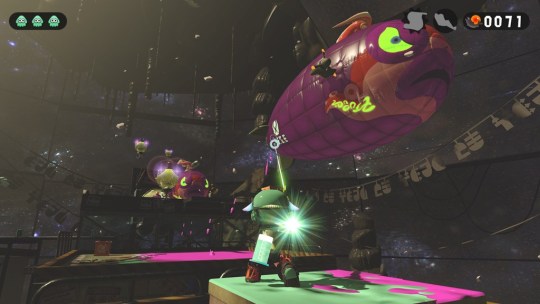
Splatoon 2 doesn't stray too far from the formula established by the original, but that's not a bad thing. I'm not the biggest fan of competitive shooters, but the cooperative Salmon Run mode looks like just what I've asked for, and the single-player mode grabbed me as soon as soon as I saw the ability to zip around using ride rails.
9. Shantae: Half-Genie Hero - Pirate Queen's Quest (Switch)

I absolutely loved WayForward's Shantae: Half-Genie Hero on both Wii U and Switch, and it looks like I'm going to fall in love all over again with the upcoming Pirate Queen's Quest DLC that lets you play as the villainess, Risky Boots. It features the same type of gorgeous, fluid action, but with modified levels, new attacks and abilities (like a grappling hook), new enemies, and a new upgrade system. Though this mode is paid DLC, Kickstarter backers will get it for free, plus it will apparently be included in the upcoming physical Switch release from XSEED Games.
8. Radiant Historia: Perfect Chronology (3DS)

The original Radiant Historia on DS is a hidden gem of an RPG, and I'm thrilled to see that this enhanced version is making its way to North America. The time-defying story and gameplay - which sees you jumping between alternate timelines - separates this from other JRPGs, and new art and scenario elements make this edition even more enticing.
7. Mario & Luigi: Superstar Saga + Bowser's Minions (3DS)
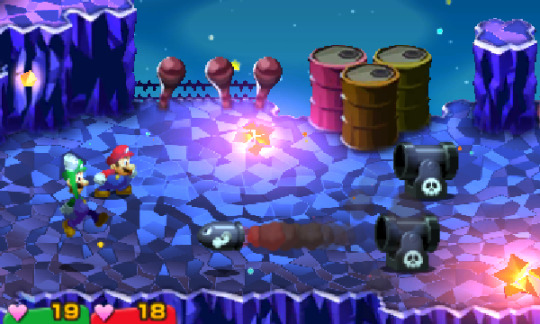
The original Mario & Luigi game is arguably still the best in the series, and now it's back with a fresh coat of paint. The fantastic writing and excellent timing-based gameplay have made their way from the GBA version virtually unchanged, but the graphics are far more detailed this time (although whether that's a good or bad is a matter of opinion). Also included is a brand-new mode where you play as the bad guys - led by Captain Goomba - and try to track down your boss, Bowser.
6. Fire Emblem Warriors (Switch)

I've long thought that Fire Emblem was a perfect fit for a Warriors title, and after going hands-on with Fire Emblem Warriors, I'm further convinced it was a good idea. The gameplay is exactly what you'd expect - you slice through hundreds of enemy soldiers while controlling a variety of heroes from past Fire Emblem games - and like in the 3DS version of Hyrule Warriors, you can quickly jump from hero to hero for advantageous positioning on the battlefield.
5. Xenoblade Chronicles 2 (Switch)

Though not playable on the show floor, the videos and presentation shown on Xenoblade Chronicles 2 make it one of my most-anticipated Switch titles. The world is vast, the combat system is suitably deep, and the anime inspiration runs high. I'm very intrigued by protagonists Rex and Pyra and they're quest to reach the land of Elysium, as well as the strange, beautiful world set atop continent-sized loving creatures called Titans.
4. New Amiibo
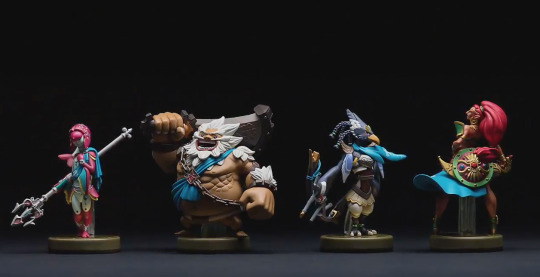
Between Mario, Zelda, Metroid, and Fire Emblem, 13 of Nintendo's biggest characters are being beautifully rendered in new plastic figurine form. All of them look great in my opinion, but I'm probably most excited about the Metroid, the four champions from Breath of the Wild (Mipha, Revali, Daruk, and Urbosa) and Bowser in a tuxedo, because it's BOWSER IN A TUXEDO.
3. Metroid Prime 4 (Switch) & Metroid: Samus Returns (3DS)

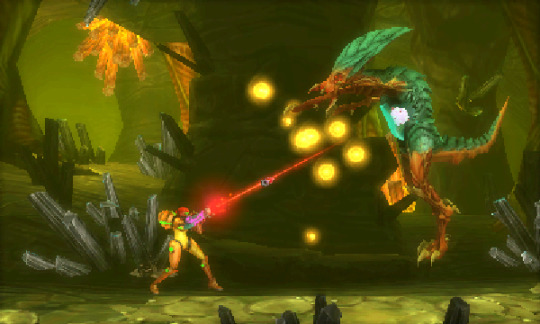
There's not much I wanted more out of this year's E3 than a new Metroid announcement, and we got not one but two of 'em. Metroid Prime 4 was little more than a logo and a promise for sometime in the future, but Metroid: Samus Returns is an extensive stereoscopic 3D remake of Metroid II: Return of Samus, and it's only a few months away. As excited as I am, I remain cautious about both titles: Prime 4 is being handled by a new dev team rather than Retro Studios, and Samus Returns is being developed by Mercury Steam, the team known for disappointing many fans with its take on Castlevania. Still, things are looking quite promising so far.
2. Sonic Mania (Switch)
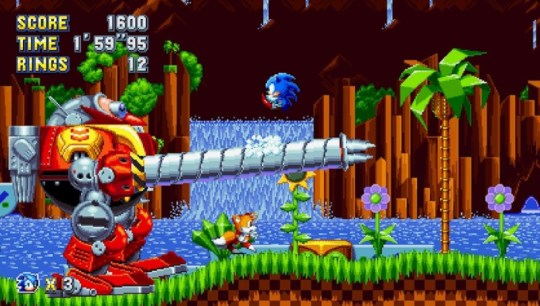
The more I play of Sonic Mania on Switch, the more I like it. The developer's love of the franchise is clearly evident, as the game highlights both platforming and all-out speed like the series was known for in its glory days. Visually, the game is neon-drenched sensory overload in the best way possible, and the ability to play as Sonic, Tails, and Knuckles lets you discover alternate routes with the characters' individual abilities. This doesn't simply play like classic Sonic; this is the realization of old-school Sonic that only exists in our rose-tinted memories.
1. Super Mario Odyssey (Switch)
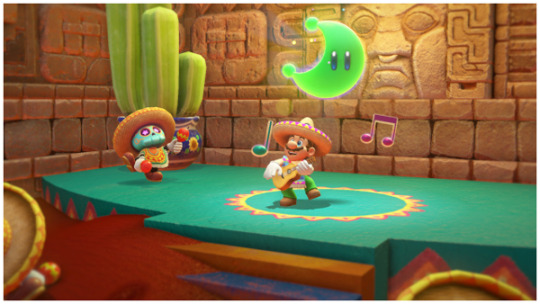
This was the game I most wanted to experience at this year's E3, and it did not disappoint. Odyssey seems to have it all: dinosaurs with mustaches, the ability to wear a sombrero, evil bunny rabbits, seamless shifts between 2D and 3D action, and, yes, Bowser in a tux. And that's on top of the traditional Mario platforming and collecting, and his newfound ability to possess NPCs, enemies, and objects. There's so much to see and do in each level, the 10-minute demos at the show flew by like they were nothing, and I can't wait to play more. I only hope there's a non-motion-controlled option for Mario's spin attack!
24 notes
·
View notes
Text
Neo Geo Mini outshines the PS1 Classic, could pave the way for a GBA Mini
But it’s not without its missteps
I don’t know what’s going on with the Neo Geo Mini. Shortly after I got my hands on one, SNK announced that an upgraded Holiday version of the hardware would be going up for pre-order in the coming days. That’s not a good sign. I have to guess that the initial SKU failed to sell as well as SNK had expected, leaving them scrambling to rework the units they already produced into a more marketable package. Their apparent lack of confidence in their product leaves me pessimistic about this weird little machine’s future.
It’s a shame too, because this is by far my favorite plug-and-play mini console to date, at least in terms of its library. I bought the NES and SNES Classics day one, and I love them to “bits”, but there’s no denying that nearly all the games on each system are outdated. That’s the point of the nostalgia-powered novelty collections though, right? To take a trip in your mind back in time?
If so, then that’s probably why the Neo Geo Mini isn’t selling. These are not the games that many grew up loving. These are the games that most of us could only afford to play for ten minutes a week at the local arcade, before going home and sinking hours into The Legend of Zelda or Sonic the Hedgehog. That said. there are several games on the console that stand up to the best that 2018 has to offer in their respective genres. Garou: Mark of the Wolves looks and plays better than 99% of today’s fighting games. Metal Slug 3 is still the best looking 2D run-and-gun action game I’ve ever played. There are also plenty of quality games on here that I’d never heard of before. For instance, if you told me that Ninja Masters was as all new indie fighter, and not a Neo Geo title from the ’90’s, not only would I have believed you, but I would have been more than happy to pay $15 for it.
That’s why, despite my love of Jumping Flash and Super Puzzle Fighter, the Neo Geo Mini beats out the PS1 Classic for me this holiday season. It’s also why I am more optimistic than ever that Nintendo will skip the N64 when it rolls out its next Classic console, and will instead jump straight to the Game Boy family of systems. I’ve already taken my Neo Geo Mini on the go with me a few times, and I’m sure people would love to do the same with a similarly versatile handheld/home console pre-loaded with games from Nintendo pre-DS portable generation. The Neo Geo Mini has issues, but its definitely worth looking into once Black Friday rolls around.
youtube
The Setup
The Neo Geo Mini is a better handheld than it is a home console. I have fairly large hands, but I’ve had no problems with the stick and buttons on the console itself. The screen is also bright and clear. The console doesn’t take batteries, and instead runs off of a USB port, similar to most cell phones. I’ve played it running off my car’s cigarette lighter USB adapter, a mobile cell phone battery, and hooked up to my laptop on the train, and as of yet I’ve had no problem with power supplies, or pulling off special moves in KoF 2002 while on the move.
The optional control pads (sold separately) aren’t nearly as nice. The analog stick is loose and the buttons are loud and clicky. They aren’t impossible to get used to, but its strange that they are such a downgrade from the stick built into the console itself.
In some misguided attempt to replicate the arcade experience, all the games are programmed to have a set amount of tokens for both players, You can tone down the difficulty ,or increase the amount of default lives you have for most of the games, but your starting token count never changes.
These are not arcade original roms though. Most have been altered for the home market to let you save then restart from whatever stage you last made it to. You can also open up the emulator’s menu and activate save states. It’s a pretty weird system that is cumbersome and confusing at first, but that’s easy to forget once you acclimate.
The emulator also has some real bare-bones features, like the ability to turn on pixel smoothing and stretching. It’s extremely small-time stuff, and for the most part, will make each game look different or worse, but never better. With the correct aspect ratio and smoothing off, the games look about as good as they do on the Switch or PS4, at least to me. I haven’t had my eyes checked this year, so maybe I’m missing something, but pressed my face up right up to the screen to look for artifacting, and my 41-year-old eyes didn’t detect any. So that’s good news. The bad news is, the only extras here are a couple of stickers. No in-menu history section, no bonuses, nothing but a instruction booklet for the hardware itself.
The Games
There are 40 games on the Neo Geo Mini. The console costs about $110, so you’re getting each one for less than $3, about $5 less than what they might go for on digital storefronts, assuming they are available anywhere else at all. They fall under the genres of fighters, wrestling games, run and gun, shmups, beat ’em ups, sports games and unnerving Tetris knock offs. There’s actually only one of these here, but it’s worth mentioning for how bad it made me feel.
The range of quality here is pretty enormous. Some of these games are a sincere waste of time unless you go in strictly to marvel at how much gaming has changed over the past 20 years. Others are games that I sincerely believe are some of the best ever made. I’ll break them up into three categories (Oddballs, Mid-tier and Classics) and do my best to describe them for you.
The Oddballs
Blue’s Journey, one of the oldest games in the bunch, is relic from a bygone era, not unlike a cigarette commercial starring The Flintstones. It has a decidedly launch era TurboGrafx-16 feel to it, with overly detailed backgrounds and very small characters. They don’t make them like this anymore for a reason. It’s generally messy, but in a sort of “manic toddler eating a $1 box of sugar cookies” sort of way.
Robo Army is so bad that it’s funny, but not that funny. The opening cinematic is completely bananas, promising unhinged Sci-Fi violence on whole other level, but when you finally get control of your character, things slow down quickly. It’s a beat ’em up where you play as a cyborg that can randomly turn into a car, as you blow up other cyborgs, giant dogs that turn out to be cyborgs, and angry cars. It’s clunky and sad, but those with a morbid curiosity for what people used to be willing to play for $.25 microtransactions might find it interesting in a scientific sort of way.
Mutation Nation starts off feeling similarly janky, but after a few minutes, you’ll see that a lot of the animation here is pretty solid. Charge moves lie at the core of the game’s combat system, which is novel for the genre, and the Akira-meets-Cronenberg character designs are surprising, sometimes genuinely disturbing.
Ghost Pilots is a top down WW2 shmup that was probably trying to leech off the popularity of 1942 and 1943. It’s totally fine, but nothing to write home about.
Crossed Swords is another beat ’em up, but this one plays from a Punch-Out!!/Pato Box perspective. It’s more polished looking that Robo Army, and the RPG elements add some depth, but the combat is a total mess. That’s bad news for a game that’s about, uh, combat.
Puzzled is the Tetris-knock off I brought up at the top. It really makes me appreciate all the little quality-of-life improvements that are found in recent Tetris games like Tetris Effect and Puyo Puyo Tetris. All you can do is move, rotate and drop you paces, so even the most basic of advancements like the T-spin is out of the picture. The game has a campaign mode and different stages, based around trying to free pixies who are trapped under some blocks? I don’t know guys, video games just sort of do their own thing sometimes.
The Mid-Tiers
Magician Lord is one of the first games I ever blew $20 on at an arcade in order to see it to the end. Playing it now is not that great. In many ways it feels like Castlevania with larger characters, but the controls are just as stiff, making it hard to keep your giant hitbox out of the way of enemy attacks. It’s got a cool transformation gimmick though (you can turn into a dragon, a ninja, or even Poseidon for some reason) and one heck of a creepy womb level.
Kizuna Encounter is a fighting game that probably started of in development as a two-player beat ’em up. Two of the games ten playable characters are beautifully animated, while the rest are serviceable but unimpressive in their appearances. What’s really interesting about the game is it’s tag team system. Unlike in recent tag fighters like Marvel Vs. Capcom: Infinite, you have to get close to your partner before you can tag them in. They don’t automatically jump in when the character you’re using is out of health either, adding an interesting layer of strategy to the otherwise standard Street Fighter II-style fighter.
Ninja Masters feels like it was supposed to be the first entry in a series that would work as the Ninja equivalent to Samurai Showdown. They clearly didn’t have a lot of RAM to work with for their ambitions, as the characters are relatively small, but it has some really smartly executed animations. If I were game designer and one of my students wanted to learn how to make realistic, non-pandering breast physics for their game, I’d probably point them to towards Ninja Masters. The whole thing culminating in battle with good old Nobunaga, which is a lot of fun for fans of magical Japanese history games like myself.
Sengoku 3 is another ninja game, a beat ’em up this time, one that’s gotten a lot of praise from retro enthusiasts over the years. I’m not 100% sure why. It’s got good art and a varied cast of characters, but nothing about it really stands out about it. Maybe I’m just unfairly comparing it to the Capcom Dungeon and Dragons games without realizing it.
Blazing Star (sequel to Pulstar) is a pretty good shmup that works on a upgrade system that extends the length and strength of your charge shot meter. Picking up power ups doesn’t always make your basic shot better, but it does give you the potential to fire off huge payloads of neon energy if you play your cards right. Other than that, a standard sci-fi anime shmup.
Last Resort is more up my alley, with a novel take on R-Type‘s bit system and even greater attention to detail to make the world you destroy feel lived in. The open levels takes place in a city under siege by giant robots, featuring little civilians driving – or even running – away from the carnage in a futile attempt to survive. It’s adorable and sad in a way that few modern shmups bother going for anymore.
Shock Troopers and its sequel are Ikari Warriors-likes with an added evasive maneuver (a roll or a jump) to get you away from bullets, though it has a fair amount of a cooldown so you can’t spam it. The animation is better in the second one, but some of the backgrounds and characters have a weird pre-rendered look that can be a bit of a turn off, whereas the first one has more consistent art direction overall. Still, both are fun enough if you’re in the mood for some hard boiled co-op arcade action.
King of Monsters, King of Monsters 2 and 3 Count Bout, are all wrestling games that are a nice alternative for people who want to beat up their friends without having to worry about too much depth getting the the way of the immediate violence. The King of Monsters games are based around Kaiju films, which adds an extra layer of charm if you’re a fan of the classic rubber suit Toho movies of old.
3 Count Bout plays it more straight faced, but it’s definitely very “videogamey”, as are Foot Ball Frenzy, Super Sidekicks and Top Players Golf, the other three sports games found in this collection. Technical limitations permitted them for going for anything that approaching “realism”, but the sprite-based graphics have a loving, hand crafted feel to them, and the respective designs of each game play like cartoonish approximations of the source material.
World Heroes 2 Perfect has a special place in my heart, as its has both the most superhuman fake Bruce Lee in the history of gaming and a psychic monk based on Rasputin, Russia’s famous love machine, but I have to admit that it’s not as deep, original, or well crafted as most of the other fighting games here. Still, it’s the best World Heroes game of them all, so if you were ever curious about what the Battleborn equivalent of ’90’s 2D fighters was like, then you’re in luck.
The Classics
A lot has already been written about the Metal Slug, Samurai Shodown, and King of Fighters families of games, so I probably won’t go on and on about them here. Like I said at the top, I think Metal Slug 3 is one of the best looking games ever made. Metal Slug X/2 and the original game in the series come close behind it. Metal Slug 4 and 5 are notably less visually impressive than the games that came before them, with little in the way of new enemies other than bosses. So you can stop after 3 if you want, but if you don’t, go into the next two with lowered expectations.
There are only three Samurai Shodown games here, and they stand out as some of the most extreme iterations of the franchise. Sam Sho 2 is is essentially the first game but with more characters. Samurai Shodown IV: Amakusa’s Revenge retains the new and improved sprites and Slash/Burt systems from Samurai Shodown III while (you guessed it) adding more characters. Samurai Shodown V Special is essentially an apology for Samurai Shodown V, bringing together characters from every chapter of the series for one last hurrah.
The King of Fighters games are a little more difficult to break down, as they work as a giant crossover of various SNK franchises. Technically, Art of Fighting and Fatal Fury Special (an enhanced version of Fatal Fury 2) work as their prequels. They are both dated compared to the games that followed, but they have significance. Fatal Fury Special is the first game to officially start the shared SNK fighting game universe with it’s hidden battle against Ryo from Art of Fighting. Real Bout Fatal Fury is also on this collection. I almost put it on the oddities list, as its weird, three-plane fighting system is pretty strange. In the end though, I threw it here with the classics because it’s definitely a significant part of the evolution of fighting games.
From there were have King of Fighters ’95. ’97, ’98, 2000, and 2002. The offer a nice overview of how the franchise evolved during the height of popularity enjoyed by fighting games in the late 90’s into the early 2000’s. From a visual perspective though, they largely pale compared to The Last Blade 2 and Garou: Mark of the Wolves. For my money, they are the two most beautiful SNK fighting games of that era, or any era for that matter.
[These impressions are based on a retail build of the hardware provided by the publisher.]
You are logged out. Login | Sign up
reviewed by Jonathan Holmes
Filed under…
from SpicyNBAChili.com http://spicymoviechili.spicynbachili.com/neo-geo-mini-outshines-the-ps1-classic-could-pave-the-way-for-a-gba-mini/
0 notes
Text
Kingdom Hearts 1.5 and 2.5 HD Remix PS4 Videogame Review
Title: Kingdom Hearts 1.5 and 2.5 HD Remix
Platform: PS4 (note this release combines various Kingdom Hearts games originally found on the PS2, GBA, Nintendo DS and 3DS)
Genre: Action Roleplaying Game ARPG
Publisher: Disney + Squarenix
Where to Buy: $49.99 on Amazon (at time of this writing)
Overall: 68/80 85% B “Very Good Game for Girls”
Geeky: 3/5 The games have fun gameplay, good graphics for the age of the games, and a great soundtrack. However, the Disney segments can be a bit too kiddie for some more serious gamers, and although the entire series is about the juxtaposition of light and dark, the light hearted disney characters can sometimes take away from immersing yourself in the deeper darker story of Sora and his friends.
Sweetie: 5/5 – This game is cuteness overload by combining well loved Square and Disney characters. It also has a surprisingly deep, relatively dark (for a Disney product at least), and mature storyline, which evolves and grows deeper and darker from game to game as characters grow and evolve.
Gameplay: 10/10 Kingdom Hearts is an action RPG. You play as Sora, a young boy who dreams of leaving his home town on a tiny island. When the game begins you are asked to choose a weapon. You may choose between shield, sword, and magic wand. You’re also asked which weapon you will give up. This allows you to customize your fighting style to match your preferences. You’ll also be asked a few questions. These questions do not have any significance on the story, but they do have a large impact on how quickly you will level up throughout the game.
A tutorial will give you a taste for how combat is in each of the games. You can run, jump, push and pull objects, climb, and use your chosen weapons as you chain attacks, dodge, defend, and parry to take down your foes. Enemies will drop small glowing orbs which can offer XP or sometimes restore health or other benefits. You will have to run around and touch the drops, because they do not get added automatically.
After settling into the game, you are allowed to freely explore the island, interact with NPCs, and engage in several minigames, such as fighting or racing with your friends on the island. You will see many familiar faces from both Squaresoft and Disney franchises.
Fairly early in the game, Sora gets his wish of leaving the island, and the rest of the game is played through traveling between different worlds, each representing a key franchise from Disney or Squaresoft. There are numerous battles to fight, areas to explore, sidequests, mini games, and hidden goodies. In fact, to find everything, across all games will take you almost 300 hours (and you’ll be awarded with an extra ending in each game). There’s plenty of content here to sink your teeth into, even for the most seasoned of gamers.
The action based combat is fun and snappy, while the mini games and interaction with a wide variety of characters gives you a break from the hack n slash combat, creating a well balanced game that equally values action as well as adventure.
Story: 8/10 I find it jarring at times how the story jumps between worlds, and I sometimes cringe at some of the Disney characters (and I consider myself a Disney fan! But it can really take away from the story, just when things are getting interesting to flash back to Goofy or Donald, especially with their well known silly voices and all). This can all make the story less immersive. However, at the heart of the story, you have a coming of age tale and a love triangle between 3 best friends. You watch throughout each game as Sora and his friends evolve and grow and change and how their friendships and relationships change as well. The story from each game is directly related from one game to the next. We’ve already watched Sora age by 2 years (and gotten a glimpse at a very young Sora as well). When Kingdom Hearts 1 starts, Sora is 14. By the end of Dream Drop Distance, he is 16. Many speculate he will be 16 or 17 in Kingdom Hearts 3. We witness Sora’s changing emotions as he transitions from adolescence to young adulthood. The main theme song in Kingdom Hearts 1 even hints at this with the lyrics of the chorus stating “Don’t get me wrong, I love you, but does that mean I really have to meet your father? One day when you’re older you’ll understand what I meant when I said No, I don’t think life is quite that simple.” Those lyrics perfectly describe the relationship between Sora and Kairi. An innocent love, a boy who still quite often views love/girls as “gross”, and a boy embarrassed by his emerging feelings of love for Kairi. And we witness not only how friendship can grow to love, but also how platonic friendships can change to rivalries when two boys love the same girl. The depths of both Riku and Sora’s love for Kairi is perhaps the best thing about the story.
I recently picked up Kingdom Hearts 1.5 and 2.5 HD Remix. I had played the original KH1 and KH2 on Playstation 2 but that was over 12 years ago now. And I had not played the other side games.
Every game in Kingdom Hearts is connected, and contains the same 3 characters, Riku, Kairi, and Sora, and the story gets deeper and more complex as the games go on as more is revealed building upon back stories and prequels and sequels and spin off games. It can be intimidating for someone new to the franchise to pick up the games now with almost 15 years of games to catch up on.
Many people recommend the following order to play the games in to get the most out of the story:
Kingdom Hearts 1 (1.5 remix)
Re: Chain of Memories (1.5 remix)
Kingdom Hearts 2 (2.5 remix)
358/2 Days (1.5 remix)
Birth By Sleep (2.5 remix)
Re:Coded (2.5 remix)
Dream Drop Distance (2.8 remix sold separately)
0.2 Birth By Sleep – A Fragmentary Passage (2.8 remix sold separately)
X Back Cover (2.8 remix sold separately.)
Unchained X (free mobile game, available separately)
Kingdom Hearts 3 (sold separately – coming soon)
So you will need bare minimum to purchase 3 games
Kingdom Hearts 1.5 and 2.5 HD Remix
Kingdom Hearts 2.8
Kingdom Hearts 3
And optionally download and play Unchained X on your cell phone.
Some of the “games” above are actually “cutscenes” because they could not emulate the nintendo DS “touch screen” on the PS4. So each of these nintendo remakes are movies which reuse old, and add new cutscenes to tell the story.
You can alternatively purchase and play these Nintendo games separately. But you should be fine with just the cutscenes from an understanding the story standpoint.
Characters: 10/10 I really enjoy watching Sora and friends evolve, age, mature, and change over the course of multiple interconnected games. I also really do enjoy seeing favorite characters thrown in from Final Fantasy and Disney. It’s a strange mashup but it works surprisingly well. If you are either a Disney or Squaresoft fan you will love the cast of characters in these games.
Graphics: 7/10 – Taking into consideration the age of the games, I think the graphics are beautiful and memorable. They are vibrant, full of color, detail, and fun. The character designs blend Disney’s whimsy and charm with Squaresofts more stylistic approach. Sora also reminded me of a brunette Cloud wearing Mickey’s big “clown” shoes. The bobble headed appearance of the characters, makes them cute, but it’s almost a bit too juvenile, given that even when we first meet Sora and friends in KH1, they’re already teenagers. I feel like they look like Precious Moments dolls, and about 7-10 years old because of the proportions of their heads to bodies. — Luckily, the artwork does improve in later games.
Take a look below:
Sora from Kingdom Hearts 1 (Does he look 14 to you? Not even close in my opinion).
14 Year Old Sora in Kingdom Hearts 1
Sora from Kingdom Hearts 2 (He is supposed to be 15 here, looks about right.)
15 Year Old Sora in Kingdom Hearts 2
Sora from Kingdom Hearts 3 (Speculated to be 16 or 17 here) (meh this design is alright, I expected to see something like Final Fantasy XV quality here. There are very few details in the hair/face and almost no shading on the clothing, it just looks kinda flat/plastic-y… not what I’d expect from a PS4 title. He does look a tiny bit more mature, slimmer face, etc.)
Music: 10/10 I’m a big Utada Hikaru fan, and I love the opening theme “Simple and Clean” – as I mentioned, I feel the lyrics foreshadow the coming of age story and changes that our little island buddies are about to experience. She also sings “Sanctuary” the opening theme of Kingdom Hearts 2. And it has been confirmed that she will also be involved with the opening for Kingdom Hearts 3. My favorite Utada Hikaru song though will always be “First Love”. The Japanese versions of the tracks are also quite catchy even without knowing the lyrics or understanding Japanese. The background music is also fitting and full of adventure and wonder.
Voice Acting: 6/10 – The voice acting is definitely hit or miss for me. Some characters I think are perfectly cast, and others way off mark. Some give pretty convincing performances, while others are too overdramatic and/or the opposite, lack any feeling or emotion in the deliverance of their lines. The iconic Disney characters also can tend to annoy and detract from the story with their overly cartoonish voices for which they are so well known.
Replay Value: 9/10 Although the games are linear, there are multiple games in this “bundle”, and each game has a secret ending, usually only uncovered for completing all side quests, or playing on the hardest difficulty settings, which will take you around 270 hours total according to How long to Beat. Even if you don’t want to go for the secret endings, you’re still looking at over 130 hours of gameplay just for the main stories of each game. For just $40something, that works out to around 30 cents per hour of entertainment. Therefore your return on investment is quite high in this title, even if you might only play each of the games once.
Overall: 68/80 85% B “Very Good Game for Girls”
Kingdom Hearts 1.5 and 2.5 HD Remix PS4 Videogame Review was originally published on GeekySweetie.com - Geeky & Kawaii Anime, Tech, Toys, & Game Reviews & News
#101 Dalmations#Action#Action RPG#Adventure#Alice in Wonderland#Animated RPG#Anime#Anime RPG#Beauty and the Beast#Catch Up Kingdom Hearts#Childlike#Children#Cloud#Crossover#Disney#Disney and Squaresoft#Disney Characters#Disney Japan#Disney Land#Disney RPG#Disney World#Donald#Enix#Fairytale#Family Friendly#Fantasia#fantasy#FF10#FF7#Final Fantasy
0 notes